
The House at Goodnestone Park, near Canterbury. Nan provides human scale here, in front of the manor, which was built for Mister Brook Bridges, in 1700. Goodnestone (pronounced GUN-Stone) Park is famous because of its link to Jane Austen. In 1791, Elizabeth (daughter of Sir Brook Bridges, 3rd Baronet) married Edward Austen, a brother of Jane Austen. During the early years of their marriage, Elizabeth and Edward Austen lived at Rowling, a manor house close to Goodnestone Park, where Elizabeth’s parents resided. Jane Austen was a frequent visitor, and made many references to Goodnestone Park in her letters. This photo was taken on August 8, 2013.
April 30, 2014.
In just a matter of days I shall once again be heading out into the World…for a month of still-deeper England-explorations, and also for an additional nine days in Italy. During the Italian portion of this forthcoming journey I’ll photograph the quiet corners of Rome’s Trastevere neighborhood; I’ll travel north toward Viterbo, where I’ll explore the gardens of Sacro Bosco in Bomarzo, along with the gardens of Villa Lante, in Bagnaia; and I’ll be returning for the third time Tivoli,to see the Baroque, mountainside gardens at Villa d’Este. Back in England, I’ll brave the mobs at the Chelsea Flower Show, and I’ll ogle the flower-bedecked storefronts of Sloane Square; I’ll do many days of serious walking in London; I’ll pop up to the Midlands for a long weekend; I’ll spend a week in Sussex; and I’ll then linger for yet another week in Kent…..all of which will provide grist for future Armchair Traveler Dairies.
Since I try to find charm in even the most mundane aspects of travel, deciding how little to pack (even for this 41-day-long journey) can become entertaining. Although I’ve not quite yet achieved the perfect balance between traveling elegantly and packing lightly—and in a way that adjusts to ANY weather conditions, in ANY season— I’m ALMOST there. This is my kit, in its entirety:

Apart from the clothes on my back, this is all I’ll drag along, during my 41-day journey to England and Italy.
With apologies to my male readers, here’s my packing-list, which is something that many of my female readers have requested:
LUGGAGE:
Kiva Packing Genius–21” upright carry-on
Kiva Stowaway Messenger Bag (with a fold-up nylon tote bag tucked inside)
PURSE: Travelsmith Metrosafe 200–Shoulder Bag
CLOTHING:
Burberry classic hooded raincoat (with button-in lining)
Hunter Regent boots (black)
gloves (black)
cashmere beret (white)
Eric Javits packable sun hat
Mephisto sandals (black)
Thierry Rabotin flat pumps (black)
Thierry Rabotin walking shoes (black)
Emilio Pucci lightweight woolen shawl (multicolored)
Ralph Lauren jeans (black)
from Babette of San Francisco (all clothing made of pleated, Italian microfiber):
2 pair City Pants (both black); 1 knee-length, sleeveless dress ( multicolored);
1 knee-length skirt (black); 1 ankle-length, sleeveless dress (black);
3 blouses (multicolored);1 lightweight, hooded rain jacket (tan).
from Three Dots: 2 cotton turtlenecks (1 black, 1 white); 4 cotton scoop neck tops (3 black, 1 white).
1 black cashmere cardigan sweater
7 days worth of underwear
2 pair black tights
4 pair socks
Anne Cole black maillot swimsuit
2 cotton nightgowns by BedHeadPJs
jewelry: wristwatch, 2 necklaces, 1 cocktail ring
2 black leather belts
MISCELLANEOUS:
basic toiletries & cosmetics ( but skip the shampoo, sun block, body lotion & toothpaste….buy those as you travel)
travel clothesline
8 clothespins
2 plastic hangers
2 sets universal electric plug adaptors
Conair Travelsmart curling iron
travel alarm clock
2 microfiber washcloths
2 cameras & battery rechargers
passport
wallet, foreign currencies & credit cards
small calendar
notebooks, pens, pencils & small address book
sunglasses & reading glasses
small flashlight
small tape measure
small magnifying glass
small manicure set & sewing kit
small travel umbrella
pocket-sized reference books, maps, and a compass ( !! )

The KEY to happy travels: Happy Feet. These are the most comfortable shoes on the Planet. I get them from Arthur Beren
Shoes, in San Francisco.
My life as a serious, solo-traveler began in 2002. After extricating myself from a marriage of long standing, the time on Earth that I hoped still remained to me seemed alarmingly short. Mastering new skills, and actually inhabiting some of the far-off places I’d experienced only through books seemed vitally important. I moaned and fretted. Should I build the idiosyncratic dream house I’d longed for since my childhood? Should I abandon book publishing and embark upon an uncertain new career as a garden furniture designer? Should I confront my nearly crippling fears about public speaking, and about finally becoming a writer? Should I decamp to Italy, and then to England…at least for a little while? Should money saved, now be spent? To a true Yankee, and one afflicted with an extreme Puritan work ethic, the mere prospect of beginning risky endeavors— of doing things purely for the joy which might come from the setting aside of self-imposed boundaries —plagued me with guilt. But my mother reminded me that the first word my infant-self had ever uttered was “DOING!” And my wise father, who had himself lived with nose to grindstone, listened patiently as —ad nauseam— I spun my worried-wheels. His answer? Always simple, and always the same: “Nan, just DO it!” And so I built, and designed, and spoke, and wrote, and packed my suitcase…
I will continue to travel, and share my adventures…until either my body or my bank account fail me.
Now, with some haste, I complete my report about last summer’s fifth and final day of Kent-explorations, as they were orchestrated by my wonderful Blue Badge Guide, Amanda Hutchinson
( www.southeasttourguides.co.uk ),
and our lovely chariot-driver, Steve Parry
( www.snccars.co.uk )
….both of whom I’ll see again, very soon.
Destination #1: Goodnestone Park Gardens
Catsole Hill
Goodnestone, South of Canterbury
Kent CT3 1PL
Open from April 15th until September 26th
Tuesday through Friday, from 11AM until 5PM, and
on Sunday, from Noon until 5PM
Telephone: 01304-840107
Website: www.goodnestoneparkgardens.co.uk

Goodnestone Park Gardens, one of Jane Austen’s favorite places to visit in Kent. Image courtesy of Goodnestone Park.
In August of 1796, Jane Austen made her first visit to Goodnestone Park, the home of Sir Brook Bridges, 3rd Baronet, and his wife Fanny (nee Fowler), who were the parents of her brother Edward’s wife, Elizabeth. Since their marriage in 1791, Edward and Elizabeth had been living at Rowling, a manor house within a stone’s throw of Goodnestone Park.
As was her habit during her long sojourns in Kent (her initial visit lasted until October of 1796), Jane wrote her sister Cassandra to report: “We are very busy making Edward’s shirts, and I am proud to say that I am the neatest worker of the party.” Her next letter sent more glamorous news: “We were at a Ball on Saturday. We dined at Goodnestone and in the Evening danced two Country Dances and the Boulangeries. I opened the Ball with Edwd Bridges…We supped there, and walked home at night under the shade of two Umbrellas.” Sounds quite nice, doesn’t it?

Edward Austen Knight (born 1768, died 1852) was Jane Austen’s third eldest brother, and the benefactor who ultimately gave her the safe haven of Chawton Cottage (in Hampshire, on England’s South Coast). ‘Twas at Chawton, during the last 8 years of her life, that Jane Austen was finally able to concentrate upon her writing.

Elizabeth Bridges Austen Knight, Edward Austen Knight’s wife (born 1773, died 1808), and mother of eleven of Jane Austen’s veritable herd of nieces and nephews.
Jane Austen dined, and danced, and clearly found Goodnestone Park much to her liking. And, being a Consummate and Doting Aunt, as well as a fine dancer and an adept conversationalist, she was often invited back for many long stays with her brother’s burgeoning family, and his in-laws.
As you may recall from Part Two of my Kent articles, Jane Austen declared:
“Kent is the only place for happiness.” It didn’t hurt that Fanny (born in 1793), the eldest of Edward and Elizabeth’s eleven children, soon became Austen’s most-favorite niece. Honoring her real niece, Austen eventually bestowed the name of Fanny upon the heroine of her third novel, the problematical and rather hard-to-love MANSFIELD PARK.
In MANSFIELD PARK, Fictional-Fanny, the second eldest of an impoverished family’s nine children, is shipped off to live with wealthy relatives, in their grand country house. After many lonely years and much privation, she eventually triumphs, simply by being more virtuous than the utterly louche circle of her cousins, and their friends. Fictional-Fanny’s triumph comes about though her marriage to her first cousin Edmund (cringe….I wonder about the health of their fictional offspring…). In MANSFIELD PARK there’s an echo of the circumstances of the strange life of Jane Austen’s brother, whereby Edward, as the third of the eight children born to the ever-financially-strapped George and Cassandra Austen, was presented to the very wealthy Catherine and Thomas Knight, childless relatives in Kent, who hankered for an heir. Edward did his best to charm, and was eventually adopted by the Knights, at which point he took their surname. Happily, Edward Austen didn’t have to marry a first cousin for all to be made right with his world. Once married, Edward and Elizabeth began to crank out children: 11 in 17 years. Sadly, Elizabeth died in 1808, as their son Brook John was born. No matter how great her wealth may have been, life then for a married woman was a perilous proposition.
Now…. onward with our tour of the landscape around Goodnestone Park’s manor house (the house itself isn’t open), which has continually evolved since 1700. The rolling, park-like grounds that Austen enjoyed in 1796 were much changed from the much more expansive and hugely formal gardens which originally surrounded the house.

Goodnestone Park, in 1719. From the engraving in Harris’s HISTORY OF KENT. Image courtesy of Goodnestone Park.
In the 1760s, Sir Brook Bridges, 3rd Baronet (what a mouthful) inherited Goodnestone, and made profound alterations to his property. The house, originally two stories tall, was enlarged with the addition of a third storey. And the strictly-geometric layout of the gardens was banished, in favor of natural-looking parklands, which swept up to the front door.

The 3rd Baronet’s changes to the landscape around Goodnestone Park. This is Goodnestone, as Jane Austen saw it. Image courtesy of Goodnestone Park.
But, as the Goodnestone Park guidebook states, “In the 1830s, a measure of formality was returned to the gardens by the 5th Baronet, who divided the park and gardens with a long wall and introduced the terraced lawns with central flights of stone steps on both east and west sides of the house. As a suitably grand approach to his new porticoed entrance, he also planted the half-mile avenue of horse chestnut trees which approaches from the north-west, parallel to the village.”
“After a long period of neglect through the war years and immediately afterwards, the garden was restored and significantly developed by Brook and Margaret FitzWalter (relations of the Bridges family), who moved into Goodnestone in 1955. Building on the garden’s long established framework of terraces, walls and trees, different areas were restored and new planting schemes introduced. Formality is retained in front of the house’s main east-facing façade with only clipped yews stretching across the lawn of the upper terrace. On the narrow lower terrace a box-hedged parterre was created to mark the millennium in 2000. Laid out by the garden designer Charlotte Molesworth, its pattern was taken from a detail of the original formal garden as shown in the 1719 Harris engraving.”
SO….after 314 years, some portions of the garden at Goodnestone have come full circle. Join me now, as I retrace the steps that Amanda and I took, on that misty August morning, when gray skies, the result of a high, ocean fog which hadn’t yet burned off (The Strait of Dover is only about 7 miles, due east) cast a gentle, pearly light. Per usual, Amanda planned our visit well: she took pains to contact the owners of the Gardens, who allowed us entry at 10AM,
an hour prior to opening time. As I’ve said many times before, being able to have such a garden as Goodnestone’s entirely to one’s self is the highest luxury imaginable.

A Map of the Gardens at Goodnestone Park, as they are now. Note: This map is truncated. The Walled Garden extends much farther, to the North, in the direction of the Village, and Church.

The East Face of the House is adorned with hydrangeas. In 1959 the house was nearly destroyed by a fire which started in the top floor. The roof collapsed and there was extensive damage to the two two floors. Happily, the ground floor rooms and most of the major contents survived intact, but renovations to the house took almost two years.
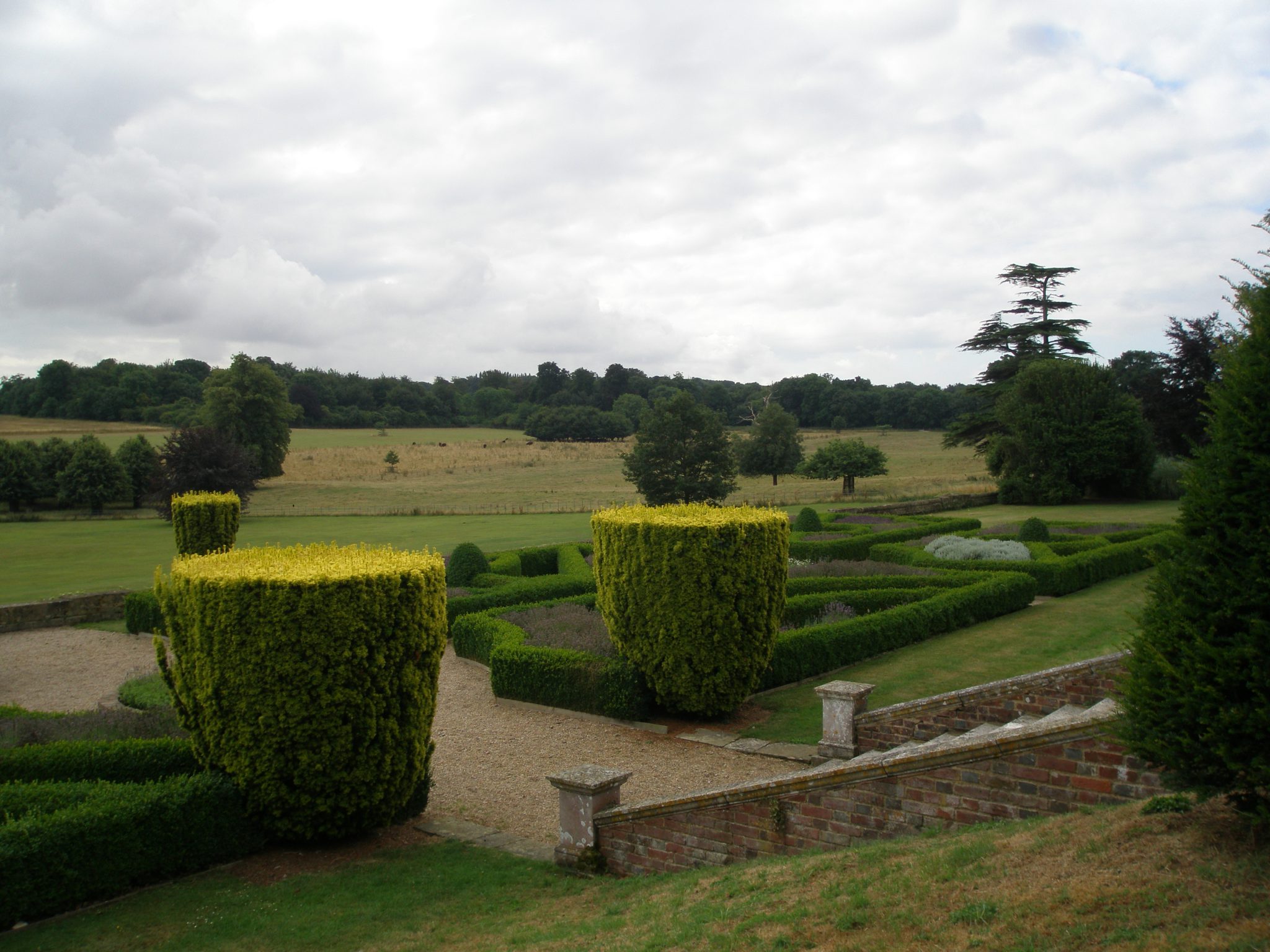
From the East Face’s Upper Terrace, one has long views over the Parterre, and then farther off, of meadows filled with grazing cattle and sheep.

As clouds thickened, we walked to the West Side of the House. During the 1830s, the 5th Baronet added this grand portico.
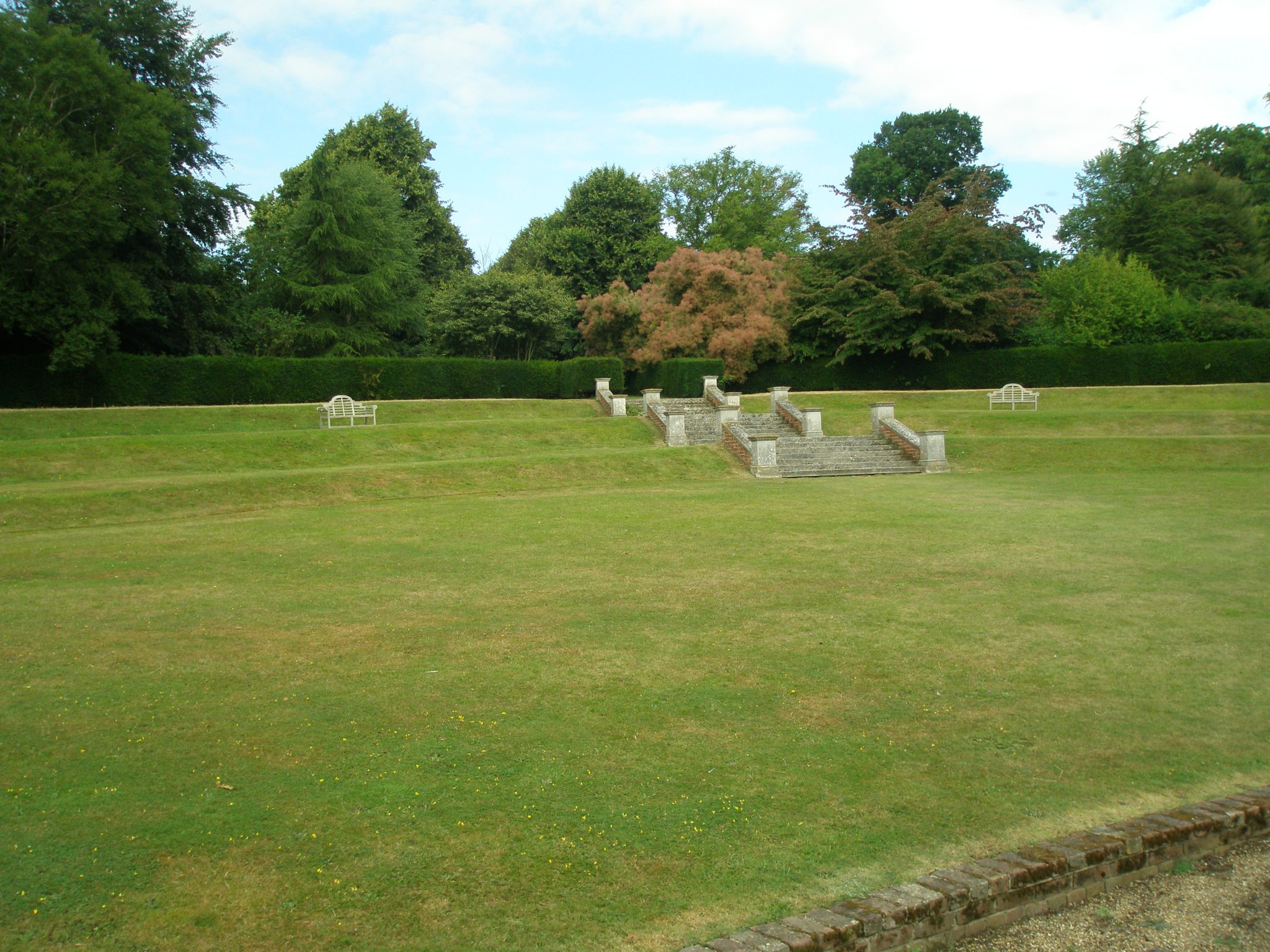
From the drive on the House’s west side, we looked upward across an amphitheater of terraced lawns. This part of the garden is now the setting for occasional theater and opera productions, which are held on summer evenings.

The 5th Baronet also added these flights of stairs, on the west, terraced lawns. An ancient Cedar of Lebanon is at the center, in the distance, and, to the left, a huge smoke bush draws the eye toward the top of the steps.

The morning fog began to lift, which considerably brightened out view of the west side of the House, as we stood at the top of the stairs.

West of the smoke bush and the narrow yew walk is an avenue of Lime Trees, which stretches for over 330 feet, to the focal point of a large, classical urn. This Avenue was planted in 1984. To one side of the Avenue are parklands and grazing fields. To the other side is an Arboretum, which is underplanted with thousands of springtime bulbs.

To the north of the Lime Tree Avenue is a newly-established Gravel Garden. In 2003, the FitzWalters decided to remove the tennis court which had occupied this space, and to create a low-maintence Gravel Garden. This whole area is self-sufficient, and is given no attention other than an annual pruning in late February, when the grasses and late-summer-flowering perennials are cut down to stimulate new growth.
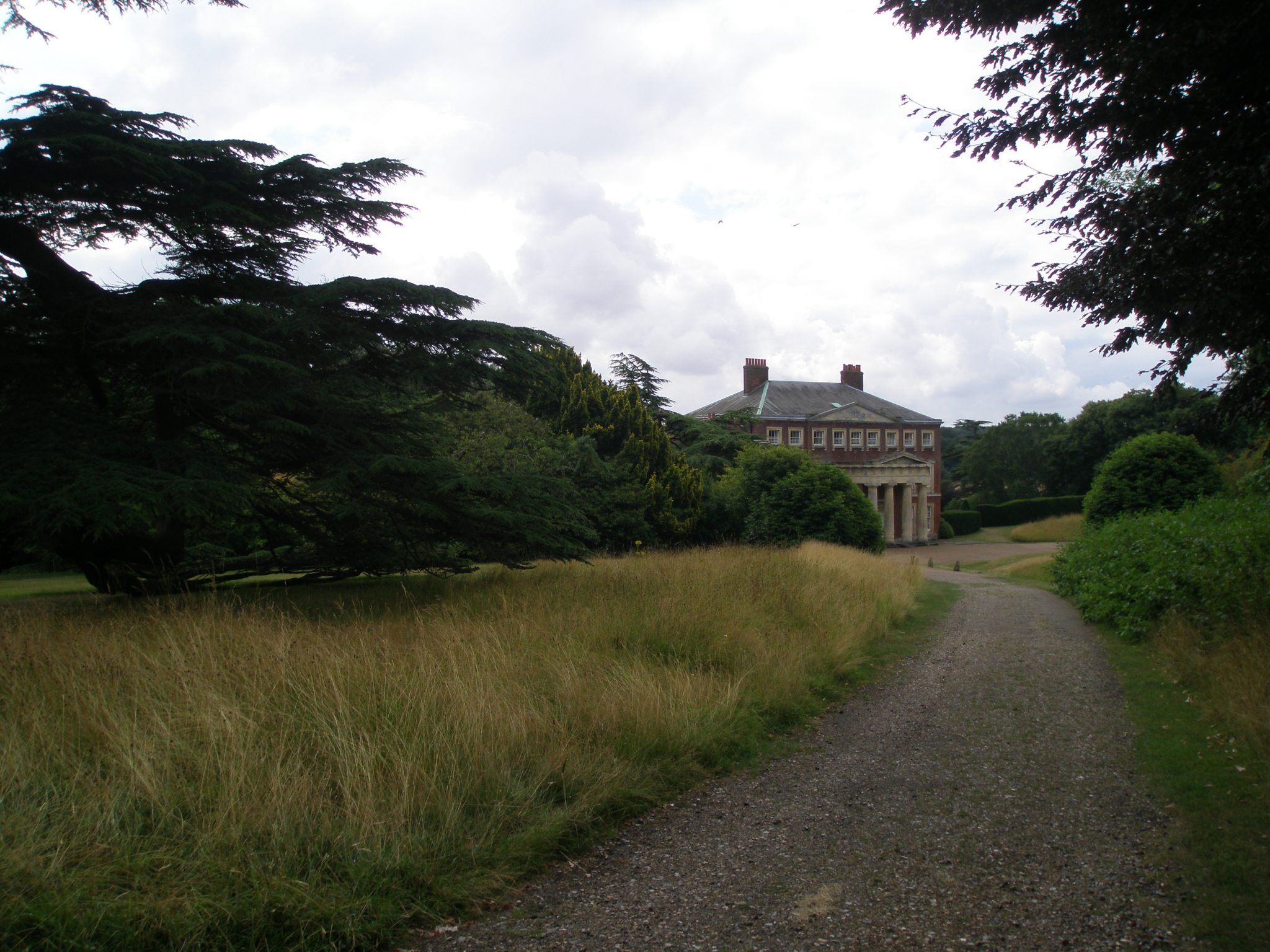
We left the Gravel Garden, and wandered down part of the half-mile-long approach drive, which runs north-west of the House. The most majestic tree along this drive is an ancient Cedar of Lebanon.

Nearby the Cedar of Lebanon is this archway, which leads to the Walled Garden. Amanda held open the gate, and smiled her little-cat-smile, as she waited to see my reaction to this glimpse of a distant, church tower.
Goodnestone Park describes their Walled Garden thusly:
“Beyond the Cedar of Lebanon, a small arched gateway leads into the Walled Garden: for many visitors, a spectacular surprise, lying as it does completely out of sight from the areas surrounding the house.”
“The view through the three sections of the Walled Garden to the flint and stone tower of the village church at the far end is among the most memorable to be found in any English garden. “
“In the first section, old-fashioned roses are underplanted with a selection of choice perennials. To one side of the rose borders a venerable yew hedge conceals a gravel path along the upper boundary wall; beyond the large greenhouse and a low flint wall on the other side are a glorious iris border tucked into a secluded corner, and an area of lawn shaded by three Magnolia grandiflora of varying ages.”
“The central section was transformed in 2009 when old planting was swept away, the area leveled, and a long rectangular pool created in the centre. A neat, narrow border lined with lavender stretches in front of the tall east-facing boundary wall on one side. On the other in front of the lower wall forming the boundary with the charming Dower House beyond is a magnificent border planted in 2010, after the completion of the new pool.”
“In the third section closest to the church tower, traditional borders overflowing with roses, peonies, iris and perennials, and towering columns of yew enliven blocks of vegetables, fruit and flowers for cutting. All around the ancient brick walls are hung with climbers and wall plants. One leading British writer recently described Goodnestone Park as ‘Sissinghurst without the crowds.’ ”

This central section of the Walled Garden is new: created in 2009, when old plantings were removed so that the ground could be leveled. After an 8-foot-slope had been flattened, a long, rectangular pool was placed in the center of the garden.

On a sunnier day, this is the view from inside the Walled Garden. Image courtesy of Goodnestone Park.

Beyond the east side of the new reflecting pool, the undulating rooflines of Dower House (which is adjacent to the Main House) create a charming backdrop for newly-planted flower borders.

Exiting the Walled Garden through yet another split-flint decorated archway, we headed into the shadows of the Arboretum, and the Woodland Garden.

Our perambulations through the gardens at Goodnestone Park at an end, I took this one, last look across the East-Side Parterre. This quiet garden was a hard place to leave….
As David Waldron Smithers writes in JANE AUSTEN IN KENT:
“Jane Austen was well versed in the fashionable picturesque movement of the time and had a good eye for landscape which she described in her novels. When Elizabeth Bennet looked at Pemberley: ‘She had never seen a place of which nature had done more, or where natural beauty had been so little counteracted by an awkward taste.’ ”
“Mark Girouard in LIFE IN THE ENGLISH COUNTRY HOUSE wrote of the time that: ‘The whole of polite society was increasingly on the move…they were constantly stopping to stay at the country houses of friends, or to visit the country houses of strangers. Within the club of polite society, both the grounds and the interiors of all country houses of any size were normally open to view, so that during the summer season the more famous and accessible houses could appear like country versions of the Parades at Bath, or Tunbridge Wells.’ ”
Throughout her lifetime, as she visited her wealthy relatives and their friends, Jane Austen was exposed to country living, at its most refined. Although without means of her own, Austen was no country mouse; she held her own among Baronets, after all…
As I breathed the ocean-moist air that morning in Goodnestone’s gardens, and inhaled the green scents of its meadows, it wasn’t hard to imagine what it would have been like to be Jane Austen, there on a similar, August morning in 1796, when she was just 21. Jane would have strolled quietly, oblivious to her shoes , which were becoming quite wet from the fog-soaked grass. Jane’s brain would have hummed with thoughts about who’d she’d danced with at the Ball on the night before, and who she’d then walked home with, in the moonlight. As always, Jane would have had much to report, when she penned the next letter to her sister, Cassandra.

Jane Austen, in 1810, when she was 35 years old. Pencil and watercolor, by her sister Cassandra Austen. Jane was born in 1775, and died in 1817, most likely of Addison’s Disease. This portrait was made while Jane and her sister and their mother lived at Chawton Cottage, on England’s South Coast.

Jane Austen’s visage will appear on Britain’s 10 Pound Note, beginning in 2017. She’s finally, officially, worth her weight in gold…as all of us who read her have known, all along.
Destination #2: The Secret Gardens of Sandwich
At The Salutation
Knightrider Street
Sandwich, Kent CT13 9EW
Salutation’s Secret Gardens have normally been open from April through September, 7 days a week, and from 10AM to 5PM. However, due to the damage from December 2013’s coastal flooding and tidal surge, one should call ahead before traveling to Sandwich. The gardeners, and many volunteers, are currently working to restore the grounds.
Phone: 01304-619919
Websites: www.the-salutation.com
www.the-secretgardens.co.uk

The Salutation, in Sandwich, Kent. House and Gardens designed in 1911 by architect Edwin Lutyens. Photo taken on August 8, 2013.
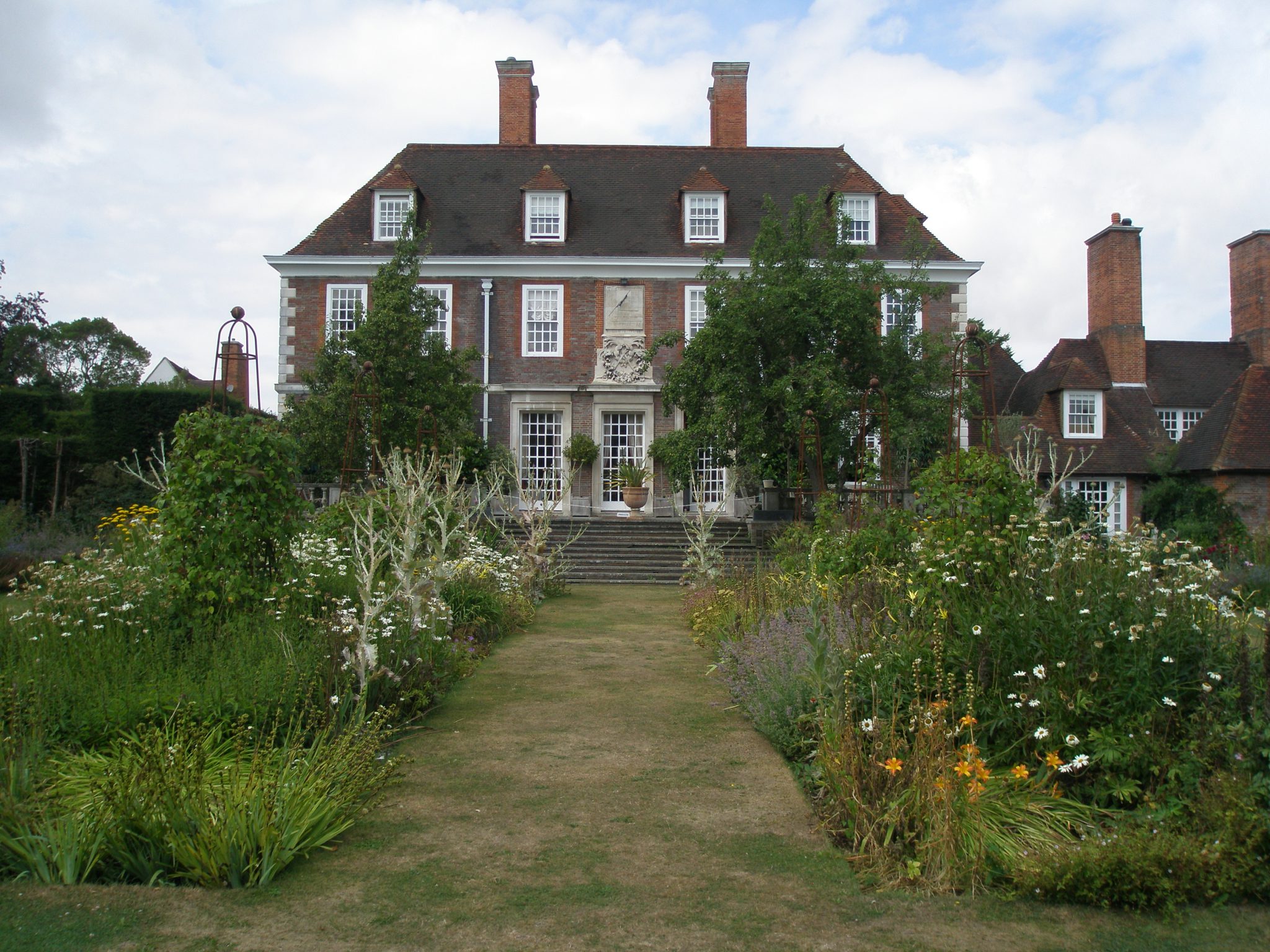
The Main Perennial Borders, near to the Main Terrace, on the other side of the House. You’ll note that, during my visit on August 8, 2013, an extended drought in Kent had parched all of the lawns.
As Steve drove us to our day’s second destination, Amanda explained that the gardens we were about to see might not much longer be open to the public. The owners of The Salutation, who also operate a small Hotel on the premises, had recently put their Grade I Listed, 3.5 acre property up for sale. The asking price? 4.5 million British Pounds (which, for you Americans with money to burn, translates to over 8 million Bucks). But the vagaries of Real Estate
last August were nothing compared to those soon to be inflicted by Mother Nature herself. In December of 2013, a tidal surge up the River Stour submerged Salutation’s Gardens under more than 5 feet of salt water.
News flashes such as these came, with depressing frequency:
“The registered Secret Gardens at the Salutation in Sandwich were severely damaged by a tidal wave and coastal flooding on 5th December 2013. The once neglected gardens had been fully restored. Sadly, they have now been devastated by salt water contamination and flooding, which have destroyed plants, killed earthworms and ruined equipment.”
“Steve Edney, head gardener at The Secret Gardens said: ‘The working area of the garden is completely under water, including workshops, heated greenhouses and sheds. A bridge in the garden has been uprooted and pushed into a tree. There are plants down there we need to save; it’s a historic collection…one of the biggest private collections that is open to the public. One plant down there is just one of three in the country. A box hedge–about waist height–was completely submerged and water is trapped in the garden.’ ”
“Owner Dominic Parker added: ‘Ten years of hard work, and a seven-figure investment…gone in a matter of hours. It’s devastating and heartbreaking to see.’ ”
As of Spring 2014, head gardener Steve Edney made this update:
“We’ve pumped approximately 5 million litres of sea water back to the river in which it came. The main damage to the garden came in the form of sea water. Two of our holly trees were killed, many potted plants floated away, and the gardening sheds were destroyed. One of the main issues we have seen is the quality of the soil degrade, due to the sea water, and the subsequent deaths of thousands of worms across the gardens. Worms are so vital for soil and compost.
BUT…with our cavalier attitude, we are rising against it, and are slowly working towards getting the garden back up and running.”

Head Gardener Steve Edney sloshed through the flood to save rare, potted plants…at least the ones which hadn’t floated away.
These Natural Calamities have made the photos I took in Salutation’s gardens last August all the more meaningful.
Here, views of what I discovered then, when All Was Still Well:
Architect Edwin Lutyens, who my Readers will recall also laid out the gardens at nearby Great Dixter, designed Salutation’s House and Gardens for a pair of bachelors, in 1911.

Architect Edwin Lutyens, who began his prolific architectural practice in 1888.
(Born 1869, died 1944)
Lutyens is famous among garden-aficionados for his many collaborations with the garden designer Gertrude Jekyll, but (despite The Salutation’s brochure copy) there is no firm evidence that Jekyll worked with him to design the gardens at The Salutation.
From the first moment that Amanda and I entered The Salutation’s grounds, it became clear from these notes by Head Gardener Steve Edney that he truly loves the little plot of land that he calls his “Plant Playground!”

At the Main Entrance, I paused to admire yet another example of the Kentish-habit of combining brick, stone, and flint. This particular split-flint wall is GALETTED…so-called when those little black specks of rock are added, and used as spacers in the mortar.

At the Main Entrance end of the Long Border, there’s a little Tropical Garden, bursting with palms and dahlias.

As we walked down the path of the Long Border, we looked over toward the Main Perennial Borders, with their huge columns of green.

Further along the Long Border, we spied the pond–which is rather grandly named “Lake Patricia”–and its Island.
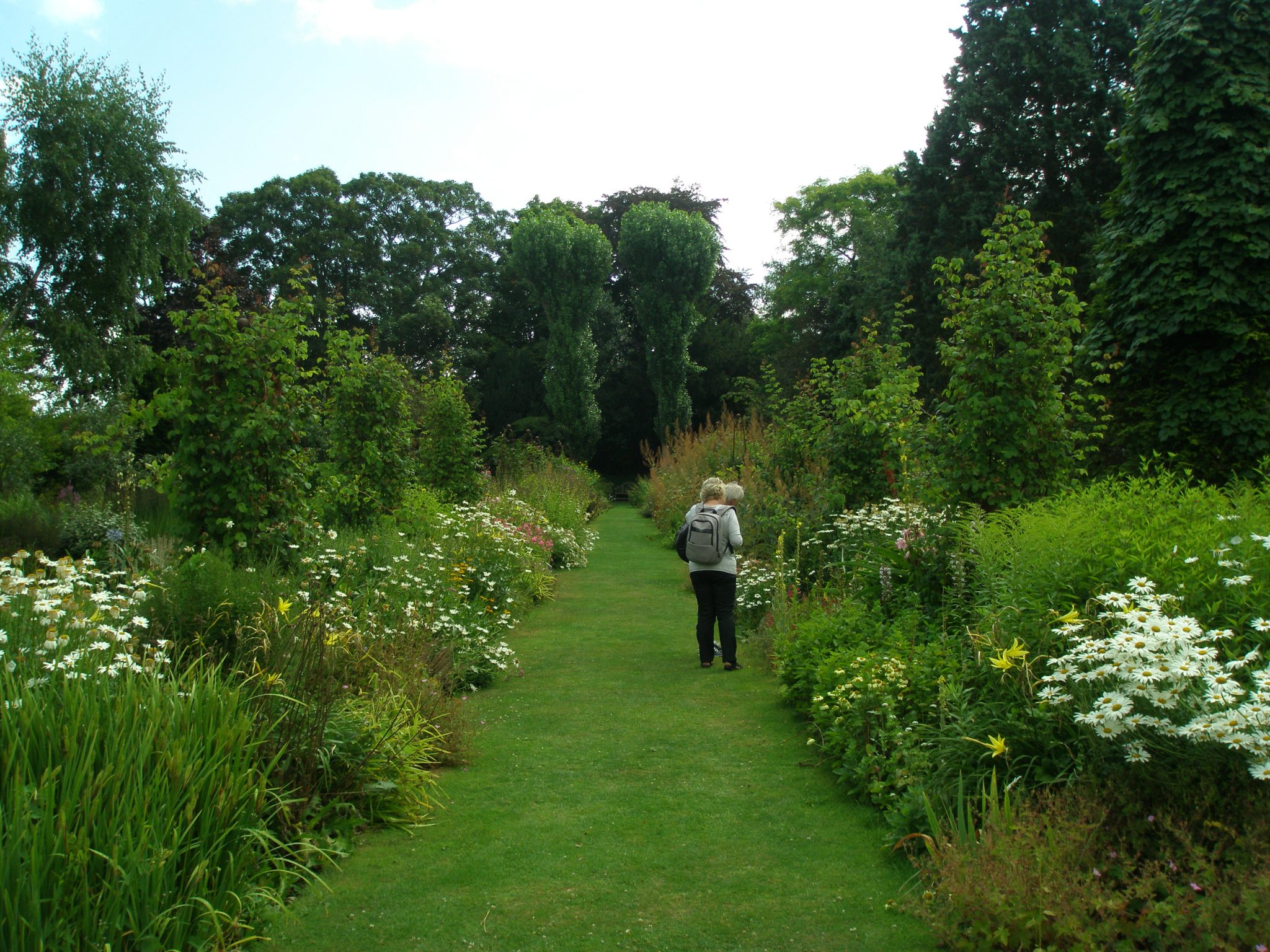
The central path through the Main Perennial Border, with a view toward the back of the 3.5 acre property.

A triangular Spring Garden separates the Poplar Walk (which is behind us) and the regularly-spaced green columns of the Holm Oak Walk. Below these brown grasses, the leaves of spent daffodils are being allowed to wilt gracefully, which is what must occur if those same daffodils are to re-bloom, when Springtime returns.

At one end of the Spring Garden, behind tall yew hedges, is the Bowling Lawn. which frames the best view of the House. This is the classic view of The Salutation.

In the end-most curve of the hedge that encloses the Bowling Lawn: two more of Lutyen’s Signatue Benches flank a joyous Angel Statue. In the background: a glimpse of one of the ancient buildings in the town of Sandwich, which was one of the original Cinque Ports; established in the 12th century to defend England’s south coast from invasion.

After a fast stop at the Tea Room, where I bought a box of delicious lemon squares, we finished our little Salutation-garden-jaunt with a look at the Kitchen Garden.

Little did we suspect that the fertile soil under these dahlias would in a few months time be submerged under more than 5 feet of salt water.
Writing about these now-profoundly-damaged gardens at The Salutation, I’m once again reminded that, in each and every historic garden that still survives, we who love gardens are witnessing Miracles.

The Armillary, on The Salutation’s Bowling Lawn…before the deluge. Image courtesy of The Salutation.
Destination #3: Walmer Castle & Gardens
Kingsdown Road
Deal, Kent CT14 7LJ
Open on most days, year round (call ahead to confirm), from 10AM to 6PM
Telephone: 01304-364288
Website:
www.english-heritage.org.uk/daysout/properties/walmer-castle-and-gardens/
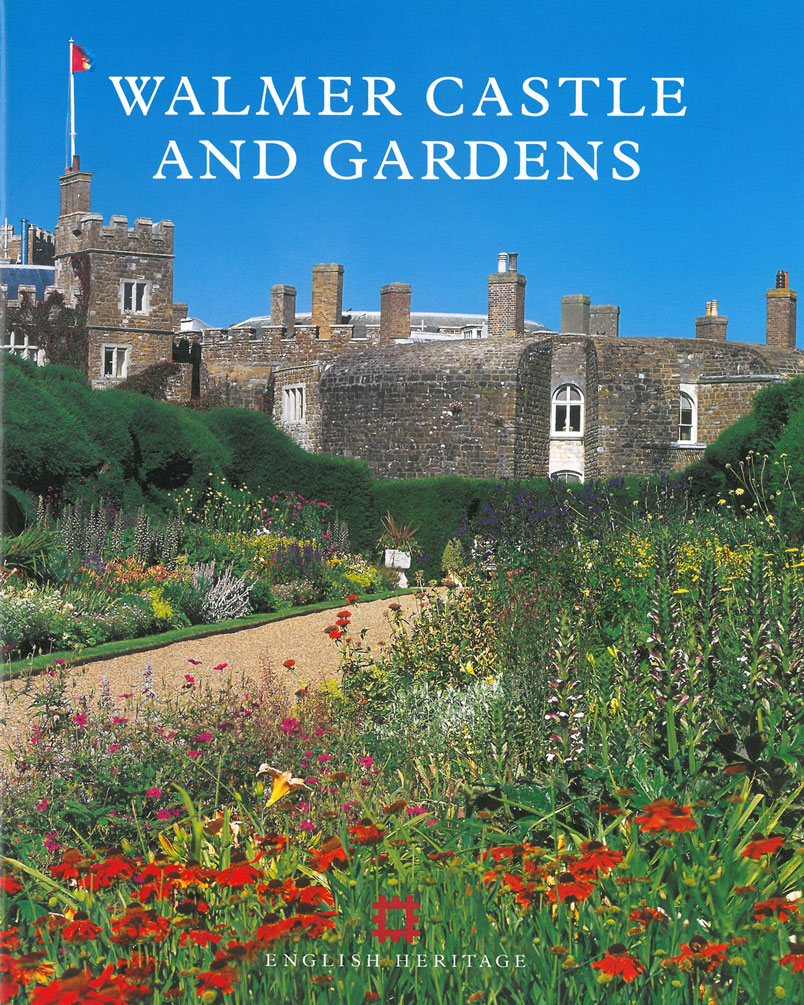
Walmer Castle (built in 1539) & Gardens, on the English Channel, at Deal. Image courtesy of Walmer Castle.
As we approached our day’s third destination I got my first-ever glimpse of the English Channel. Happily, the morning fog was long gone, and as Steve drove us along the ocean-side road in Deal, my brain went into happy-in-the-sunshine-by-the-seashore-mode. In this blissful state of mind, I began my tour of Walmer Castle, and its gardens.
The English Heritage guidebook to Walmer Castle introduces us to the property:
“Walmer Castle was built in 1539 as one of a chain of coastal artillery forts constructed by Henry VIII against the threat of invasion by Spain. From 1708, it became the official residence of the Lords Warden of the Cinque Ports, an office held by many famous people, including the Duke of Wellington, Sir Winston Churchill, and the late Queen Mother. The castle was adapted over the years by successive Lords Warden, to make it into a more comfortable home, and the grounds were developed into attractive gardens, which are still changing today.”
“Although its exterior has been softened and its interior made more comfortable after nearly 300 years as the residence of the Lords Warden of the Cinque Ports, Walmer is unmistakably a Henrician artillery fort. Dominating the centre is the great circular keep, surrounded by an open courtyard within a concentric curtain wall. Projecting from the curtain wall are four squat, rounded bastions. The northern bastion incorporates the gatehouse, leading to a drawbridge across the moat. The moat itself has a stone-faced counterscarp or outer wall, and was later divided by a couple of cross-walls added in the nineteenth century to make it into a garden. But however tranquil Walmer now looks, its construction in the politically turbulent 1530s was a response to the very real threat of invasion.”
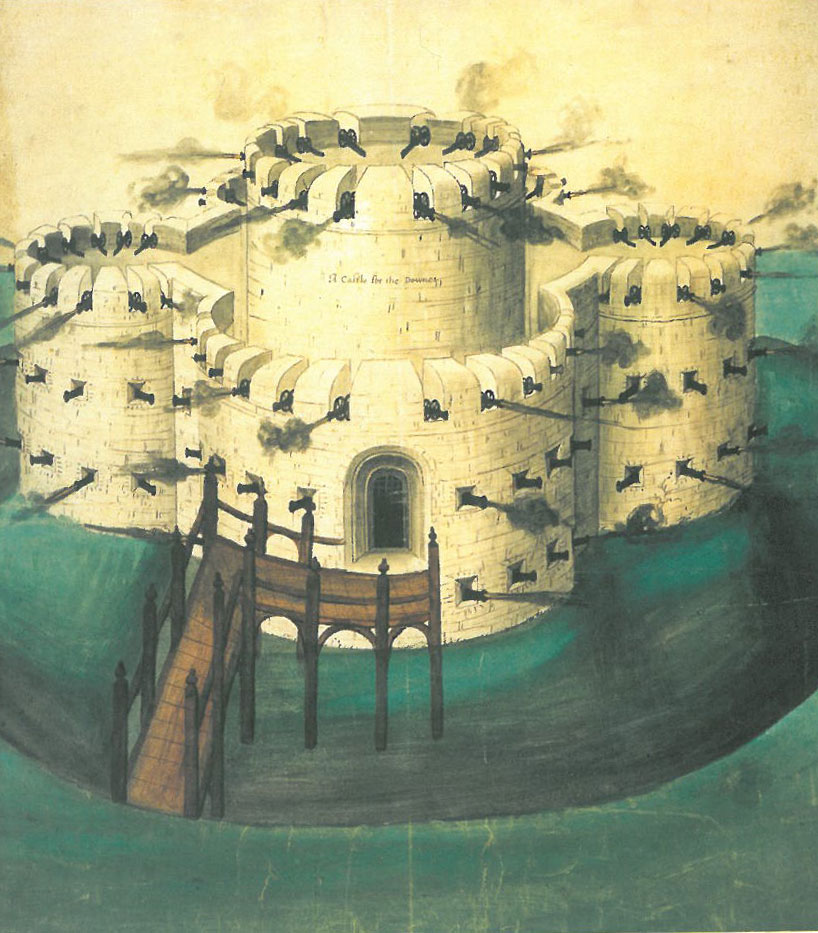
The artillery forts built along the Kent coast all followed this basic design. Image courtesy of Walmer Castle.
Steve parked his Mercedes in the shade of a tall tree, and Amanda and I set out for the Castle.

This was our view from the Entry Bridge, down into the Moat, which has been transformed into a Garden.

After passing through the Gate House, we were presented with this spectacular demonstration of the Bricklayer’s Art: an alcove in the open courtyard that’s within the concentric curtain wall of the Castle.
Over time, as Walmer became less and less a place of military importance, and more a place where illustrious Britons could retreat for a bit of ocean air, the interior rooms of the Castle’s First Floor (i.e. Top Floor) were transformed into incongruously suburban-looking spaces.
In 1793, while Britain was engaged in one of its many wars with France, William Pitt the Younger, who had been Prime Minister for nearly nine years, accepted the post of Lord Wardenship. While he kept his telescope pointed toward the Channel (hoping to NOT see the approach of French warships), Pitt also did some serious redecoration of the premises, and had the central corridor, which runs the full length of the Castle, done over in high style.

William Pitt the Younger’s Blue Corridor, which was fashioned in the late 1790s. Image courtesy of Walmer Castle.
In 1828, the Duke of Wellington was rewarded with the post of Lord Warden, and further improvements were made to the Castle’s living quarters.
And During Queen Victoria’s long reign (which endured from 1837, until her death in 1901), especially in the early years, while her beloved consort Prince Albert was alive, Walmer Castle saw many royal visits. In 1842, the young couple, who had married in 1840, made their first visit to the Castle.

Miniature of Prince Albert (1842) by Henry Pierce Bone. Miniature of Queen Victoria (1839) by William Essex. Images courtesy of Walmer Castle.

English newspapers printed this etching of Queen Victoria and Prince Albert walking along the beach at Walmer, on 25 November 1842. Image courtesy of Walmer Castle.
After Victoria’s death, her bedroom remained the principal bedroom of the Lords Warden.

Queen Victoria’s not-at-all-fancy bedroom, as pictured in a 1919 magazine spread. Image courtesy of Walmer Castle.
But perhaps no Lord Warden of Walmer Castle has been as beloved, or as closely concerned with making the Castle seem like a Home, as Her Majesty Elizabeth the Queen Mother was.

HM Elizabeth the Queen Mother took great interest in both the Castle, and its Gardens. Image courtesy of Walmer Castle.

Todays visitors to Walmer Castle see the Dining Room, just as it was used by the late Lord Warden, HM the Queen Mother. The celeste blue Minton service on the table was the one which the Queen Mother kept at the Castle. The dining table and set of thirteen mahogany chairs belonged to William Pitt. The large collection of prints provides portraits of most of the Lords Warden. Image courtesy of Walmer Castle.
But now…time for us to get back outside, into that wonderful, fresh ocean air!
We went to the top of the Castle, and out onto the ramparts which overlook the English Channel.

As we stepped out onto the Ramparts, I looked across the moat, and saw Steve’s well-shaded silver car.
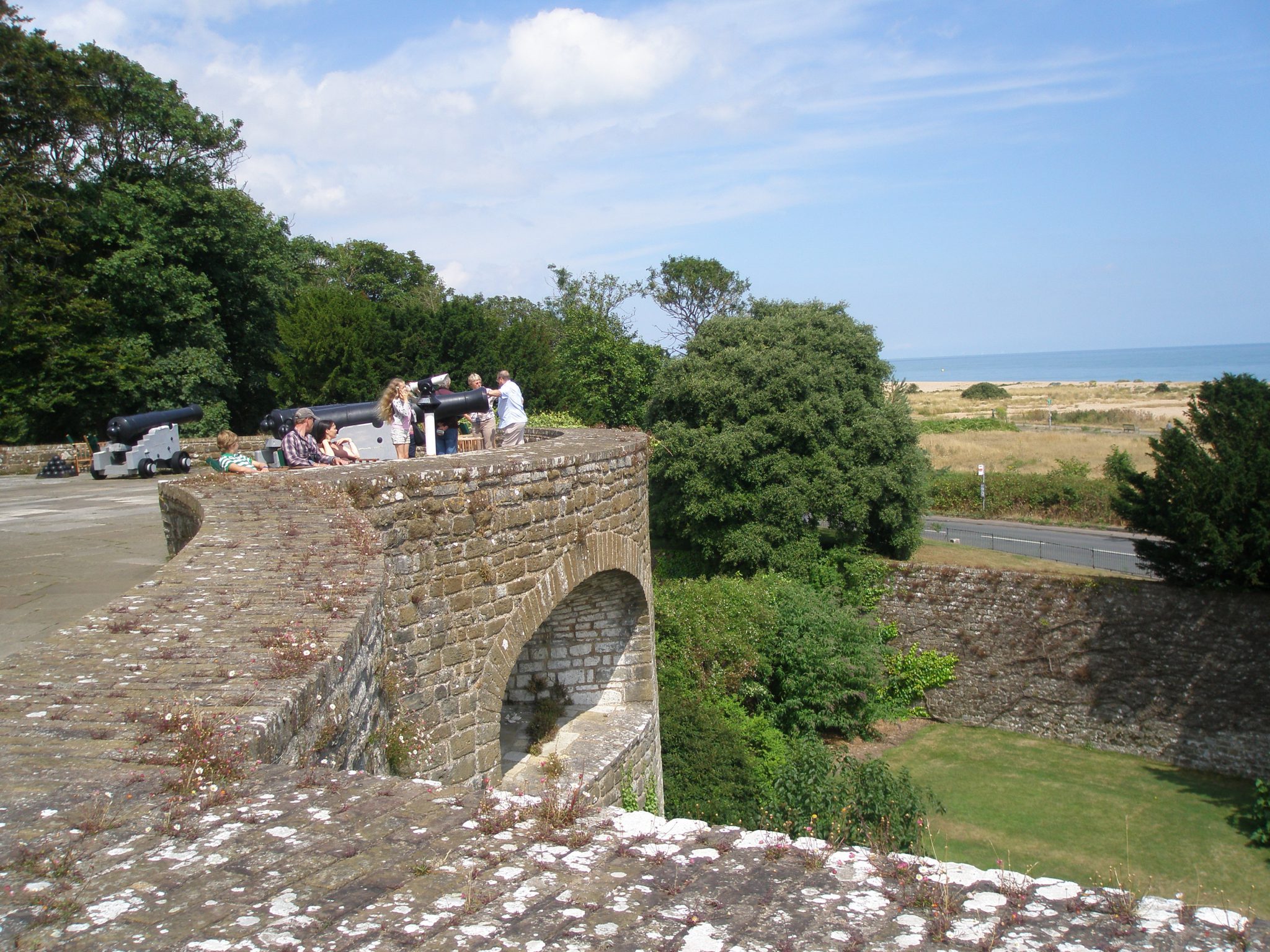
Happy visitors, on the Ramparts. Really….I would have been contented to have stayed right here…for the rest of the day!

Just looking at these pictures now makes me almost feel the fresh air, and the warm sunshine. If you strain your eyes, you can see the gray profiles of ships, as they navigate, on the English Channel.

As we walked further around the Ramparts, we glimpsed the rectangular pool in the garden that was made in 2000, for the Queen Mother.

A view of the Top Floor of the Castle, from the Ramparts. From this vantage point, the place seems very much a Serious Fort.
We exited the Castle, and began our tour of the Gardens.

In 2000, the garden designer Penelope Hobhouse was asked to design a garden, just for the Queen Mother. Image courtesy of Walmer Castle.

In 1866, this immensely long (at 263 feet) Broad Walk was planted. The yew hedges that extend along each side of the Walk are pruned into fantastic shapes, which are known by the delightful name of DRUNKEN HEDGES. I want some Drunken Hedges for MY yard!!!!

The Drunken Hedges’ undulations catch shadows, even at high noon. The Hedges didn’t achieve their wonderful tipsy-ness until 1947, when a heavy snowfall damaged the previously-geometrically-shaped yews. As the gardeners pruned away storm-damaged parts of the yews, it occurred to them that they had the makings for the Best Drunken Hedges….EVER.

We ambled up the Broad Walk, all the while admiring the artfully-planted flower beds…and then headed toward the Upper Terraces.

On the Upper Terrace, we paused by this Armillary Sundial, which was presented to the Queen Mother in 2000, as a 100th Birthday Present .

Beyond the Upper Terrace, this statue of Hermes welcomes visitors to the wild ramble of the Garden’s Paddock-area.

We headed back toward the Castle, to its Kitchen Garden, which has been in continuous cultivation for 300 years; growing fruit, veggies and flowers.

We crossed this timber bridge, which was probably built in Pitt’s time, and headed back into the Castle’s South Bastion.

And we took one, last look at the sunken Moat Garden. The sheltered conditions in the Moat allow tender plants and fruit trees (which could not normally survive the harsh, salty, seaside conditions) to flourish.

English Heritage (aka the Historic Buildings & Monuments Commission in England) is a branch of the British government. Its mission is the stewardship of more than 400 significant historical and archaeological sites, throughout the U.K.
After this joyous little stop, the next pressing bit of business HAD to be LUNCH. And so, with our three stomachs growling in some sort of harmony, we headed south, toward St.Margaret’s-at-Cliffe, where Steve and Amanda would be my guests, at a great seaside fish-joint called The Coast Guard.
Destination #4: St. Margaret’s-at-Cliffe & St. Margaret’s Bay
The Coast Guard Restaurant & Pub
The Bay, St. Margaret’s Bay
Kent CT15 6DY
Telephone: 01304-853176
Every not-foggy morning at St.Margaret’s-at-Cliffe, the topmost point of the white chalk cliff that looms over the Channel is the first bit of English soil that’s shined upon by the rising sun. This small village, which is on the coast road between Deal and Dover, first appeared in the Domesday Book (1086AD) as “Santa Margharita.”
For as long as ships have sailed past those cliffs, lights have been kept burning on the beach to warn mariners of the dangerous shores. From late Victorian times, the village developed as a holiday resort. Among those who have stayed or lived there are Lord Byron, Max Beerbohm, Noel Coward, Ian Fleming and Peter Ustinov. The coming of WWII saw all but the most essential citizens evacuated, and the area then occupied by British troops. The village was subjected to almost daily German bombardment, and became known as “Hell-fire Corner.” Anti-aircraft guns were mounted on the cliff-tops; the emplacements included some old naval guns that had been scrounged from the battleship HMS King George, which were named “Winnie,” and “Pooh.” What with those monikers, it’s not surprising that, when fired, those pieces of artillery only managed to break local windows.
Amanda and Steve and I found ourselves a table under an umbrella, on the sunny deck at the Coast Guard.

The Coast Guard Restaurant & Pub. We dined on freshly-caught fish, and basked on the sunny deck, while we watched the incessant shipping traffic on the English Channel…a perfect, seaside interlude.
Per Steve’s recommendation, I ordered the restaurant’s specialty: a freshly and locally caught whole, Dover sole: which was cooked simply and scrumptiously in a toasted crumb coating, and garnished with lemon.

I didn’t take a photo of my plate…I was way too hungry to fool around with my camera. But this is what a whole, cooked, lightly-breaded Dover Sole looks like.
After my plate had been set before me, Steve gracefully demonstrated with his own sole how to fillet the fish…a procedure that turned out to be one which required much finesse. The skeleton in Steve’s sole was removed, intact. The skeleton in my sole? Not so prettily excised! But the Dover sole tasted sublime.
Restored by food, we walked along the shingle beach, and admired the looming, chalk cliffs.

Beach-goers lounge on the rough, shingle beach, while an endless armada of ships passes, on the English Channel. On the far horizon, France can be seen, as a thin smudge of darker blue.

As we walked along the beach, Amanda told me to look uphill: Noel Coward rented the light-colored stucco cottage, at the top of this slope. At each house that Coward rented during his lifetime, he attached a set of tin angel’s wings to the front door, or wall.

…no more time for seaside-strolling. We headed back toward the Coast Guard Restaurant’s parking lot.
Since 2008, the village of St.Margaret’s-at-Cliffe has been working to become a “Carbon Neutral” village: all residents have begun retrofitting their homes to reduce energy use. This town-wide initiative was begun by the Bay Trust, which is based at the Pines Garden…a beautiful 6 acre garden and conference center that rests at the very top of the chalk cliffs.
Destination #5: The Pines Garden, Museum and Conference Centre
Beach Road
St.Margaret’s Bay
Kent CT15 6DZ
Open Year-Round, Daily. 10AM to 5PM.
Telephone: 01304-851737
Website: www.pinesgarden.co.uk
The Pines Garden is perhaps the least-heralded of all of the places that Amanda had taken me to during our five-day pilgrimage to see the magnificent gardens and estates of Kent. But its dramatic setting, as it teeters at the Very Edge of England, makes The Pines Garden worthy of a visit. As we ambled across the gardens, our only companions were a few, local children whose mothers had set them loose to run freely, over the broad lawns. Here now, a little tour of The Pines Garden:

We passed through the entrance gates, and then turned for a moment, to take in this vista of the English Channel.

The Pines Calyx Conference Center is constructed from chalk and other local materials, and also has a gorgeous, living, green roof. I can imagine a James Bond movie from the 1960s happening here, can’t you?

We paused, and looked back toward the massive chalk cliffs on the Channel…the view seemed surreal, to me.

Beyond Winston, there’s a wonderful example of recycling: architectural remnants from the facade of a grand building have been laid out on the ground, where they serve as divisions for an elegant series of garden beds.
Believe it or not, there remained yet ANOTHER wonderful destination, on our day’s dance-card. Much as lingering by the seaside appealed to us all, the afternoon was progressing, and ‘twas time to get a move on. Although Dover wasn’t a formal item on Amanda’s amazing itinerary, she and Steve made sure that, as we traveled to our ultimate garden (of the Day, and of our Grand Tour) I got a glimpse of Dover Castle.

Steve paused, so I could take this fast-photo of Dover Castle. I shall try to visit the Castle, on a future Kent-journey.
Destination #6: Godinton House & Gardens
Godinton Lane
Ashford, Kent TN23 3BP
Open: March through November, Daily. 1PM–6PM
Telephone: 01233-643854
Website: www.godintonhouse.co.uk

Godinton House & Gardens. A house has been on this property, since the end of the 14th century. Image courtesy of Godinton.
And Now: the Last But Not Least Entry in my Kent Opus!
For this final destination, on the ultimate day of our touring together, Amanda chose to lead me to the Gardens at Godinton House…to a grand, gracious landscape where antiquity and modernity serenely coexist.
Simon Houfe, in his excellent little book on Godinton, introduces us to the property:
“In his classic book on Kent, Richard Church refers to the county as a gateway to Britain, as famous for its welcome to strangers as for its hospitality. Julius Caesar called the men of Kent civilized, and Church added: ‘Again and again, in studying the history of the county, one is impressed by the closeness of this association with the mainstream of European civilization… It became the home of the administration and was enriched with the comings and goings of the cultural traffic from Rome and Gaul.’ ”
“In much the same way, Godinton House has absorbed the history and culture of its region for six hundred years. Standing in its tranquil parkland setting, it has seen the rise and fall of a score of monarchs, uprisings, rebellions, Civil War and the threat of invasion. Like the great oaks in the park, it has been buffeted by the occasional onslaughts of change, but has remained relatively unsullied by time. It has been fortunate, and unusual among its neighbors, in having only two major changes of ownership in six hundred years. It has been doubly fortunate in that its owners improved their inheritance without sweeping away what had gone before, ensuring that such a rich heritage continues.”
“In 1879 when Colonel John Leslie Toke, the last of his line to occupy Godinton, was carrying out renovations, he discovered that Roman bricks, together with those of medieval date and later, formed part of the foundations. This mixture of dates and styles is almost a metaphor for the house itself, where the ancient world meets the modern world; where Kentish materials and Continental designs jostle for position; where Flemish glass and English glass decorate the windows; and the smell of the sea as well as the Downs is in every touch of chisel and adze.” [Note: An adze is an ancient steel tool, used to cut and shape timber.]
Mother Nature gifted us with a perfect, late-summer afternoon. Golden light, soft warm breezes (and near-total absence of other visitors) made that old refrain of “Kent is the only place for happiness” play silently again in my brain. So now, as we bid adieu to the wonders of Kent that Amanda revealed to me last August, please enjoy this Tour of the lovely sights at Godinton House & Gardens.
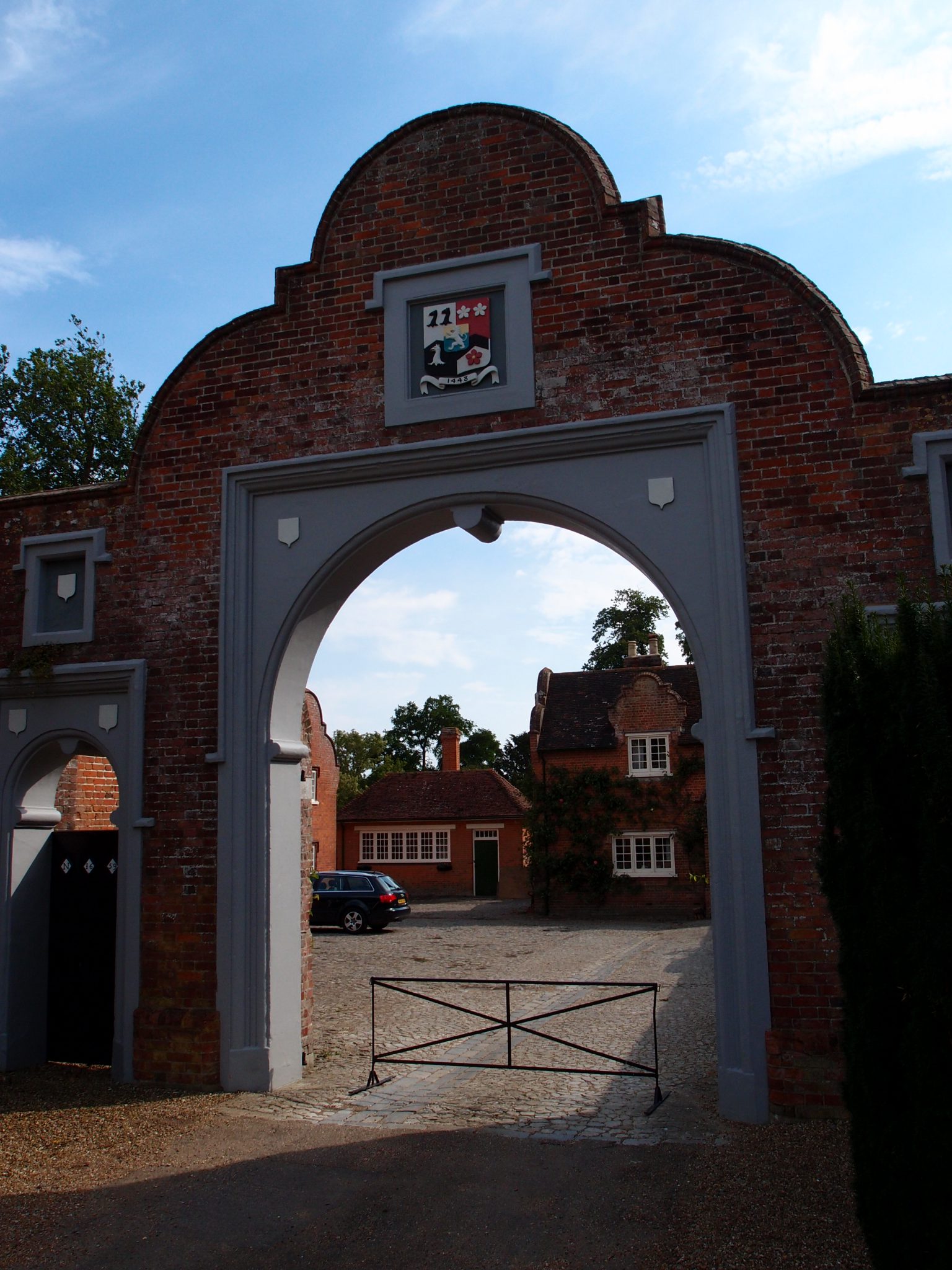
Leaving Steve with his chariot in the parking lot, Amanda and I passed through this fancifully-shaped gate, and into Godinton’s Gardens.

As we passed between the clipped yew hedges, I was charmed to see how the hedge-tops were shaped to mimic the lines of the House’s Jacobean gables.
The Columbia Encyclopedia summarizes the Jacobean style as “an early phase of English Renaissance architecture and decoration. It formed a transition between the Elizabethan and the pure Renaissance style later introduced by Inigo Jones. The reign of James I (1603-25), a disciple of the new scholarship, saw the first decisive adoption of Renaissance motifs in a free form communicated to England through German and Flemish carvers rather than directly from Italy. Much use was made of columns and pliasters, round-arch arcades, and flat roofs and open parapets. These and other classical elements appeared in a free and fanciful vernacular rather than with any true classical purity.”

The North Front of the House. Behind this Jacobean exterior, which dates from about 1628, the medieval hall of the original timber-framed House, which was built in the 14th century, remains. As with all venerable English homes, layers upon layers of architectural styles co-exist at Godinton.

At the southern edge of the North Front Entry Court, this sculpture clearly announced that in
Godinton’s gardens, we would find a mixture of the classical and contemporary.

As afternoon shadows lengthened, we found ourselves on this Long Walk, on the House’s east side. Sunken below the Walk: the parched expanses of a Croquet Lawn.

We headed north on the Long Walk, toward the Pan Garden, which is tucked into the northeast corner of the estate.

Glass Garden Ornaments (very much like the ones I was soon to see, in Anne Guy’s Midlands garden), in a border on the north side of the sunken, Croquet Lawn.

Another view of the East Face, from the north border flower bed of the Croquet Lawn….during a less drought-ridden time. Image courtesy of Godinton.

From the Croquet Lawn, we proceeded south, on the Herbaceous Border path. The Lily Pond shimmers, in the distance.
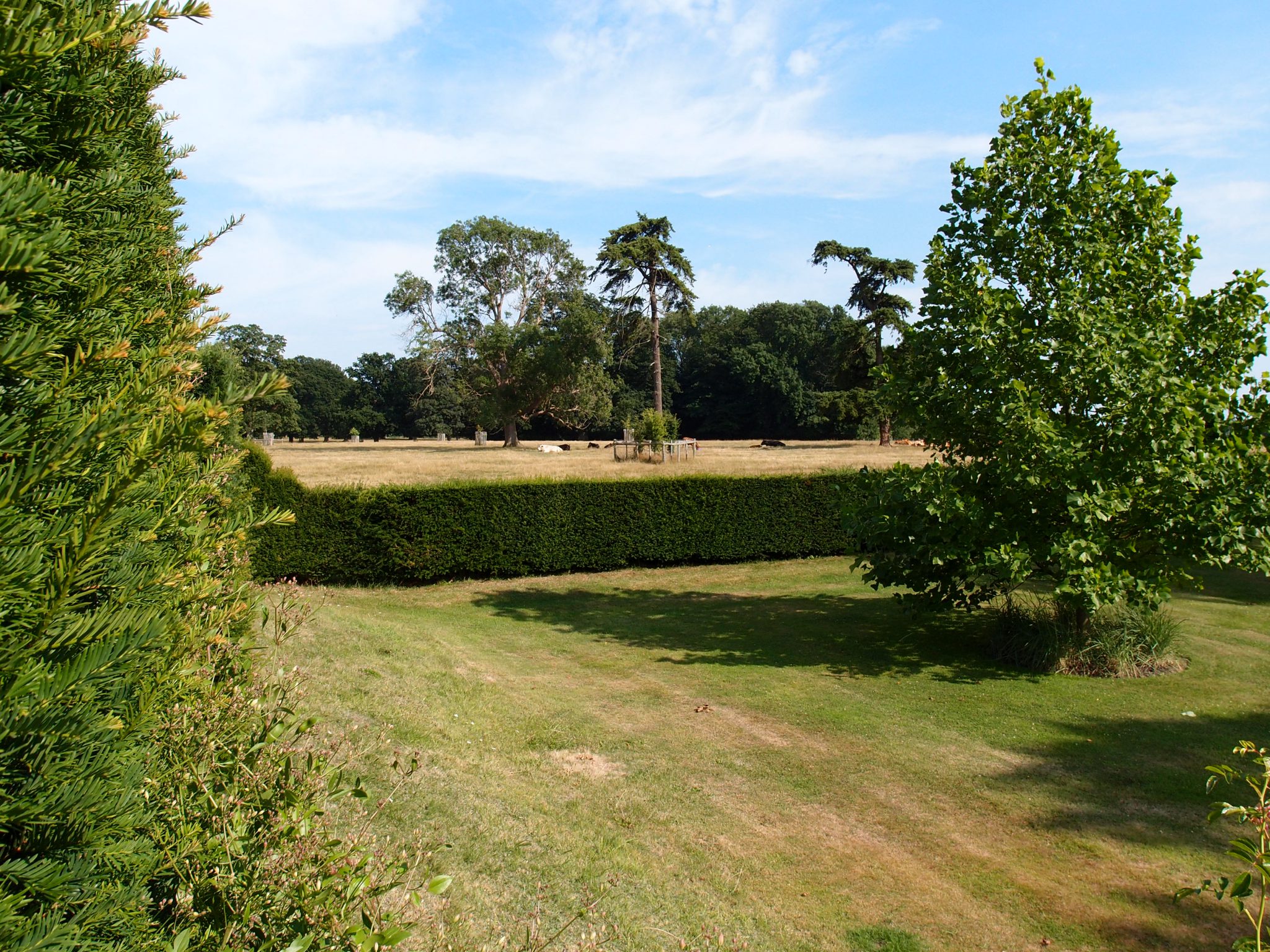
A closer look at the cattle who graze, on the other side of the Garden’s perimeter wall of yew hedges.

At the opposite and southern-most end of the Long Walk that begins by the Pan Garden, there’s a Belvedere, which affords long views out over the Great Stour Plain.

Free-form Wooden Chairs look right at home on the Belvedere. Amanda enjoys the afternoon’s warm breeze.

We hung a left, onto the Tennis Lawn, where Godinton’s greatest concentration of sculptures is displayed.

The late 18th century Walled Garden can be discreetly entered through this brick gazebo that’s next to the center of the Rill in the Italian Garden.

Along the north side of the Walled Garden, an old Oast House (see those double, conical roofs, peeking up from behind the front gable?) has been converted into a cottage.

Blown-Glass Decorations and Espaliered Pears. This is a Serious Garden…that doesn’t take itself seriously. Pure Fun.

With more than a little regret, I admitted that it was time for us to leave Godinton’s Gardens. We exited the Walled Garden….

…and found ourselves in the shady Wild Garden, which is surrounded by acres and acres of sunny pastureland.
As Simon Houfe explains, “The magnificent park and gardens setting of Godinton that we see today has in fact evolved over many centuries. Medieval in origin, the early park was centered to the northeast of the house, and was enclosed by a dike and a hedge. By 1619, the farmyard and barns lay to the north of the house and were linked to it by walled enclosures and gardens scattered with small buildings. Fishponds were stocked with pike, carp, bream and tench; the orchards were hedged around and planted with Crab Apple, Cherry, Pear and Apple trees; and on the estate “chesnut wood” and “the great oake in the meadow” were pollarded. “
“During the late 18th century, extensive alterations were made, setting in place the foundations of the present landscape. In the spirit of the naturalistic landscape fashion of the time, the farm buildings and approach north of the house were swept away. The park was enlarged westwards and southwards and fine views of the house were created from new carriage drives. Walled gardens were added to the west and linked to the south front of the house by new garden shrubberies. The remaining fishponds and ditches were combined to create a new pool below the gardens.”
“The new park remained largely unaltered during the 19th century. In 1896, a new owner commissioned Sir Reginald Blomfield, noted architect and garden writer, to remodel the house and the gardens. The formal layout of the yew-hedged entrance forecourt, terraced lawns, rose garden and pond reflected Blomfield’s views on the pre-eminence of formal garden structure as a setting for architecture. Blomfield’s design remains the framework of the gardens today.”

A view from the fields beyond the Pan Garden, toward the East Front of the House at Godinton. Image courtesy of Godinton.
As I’ve completed this account of Day Five of my Kent explorations, I’m once again amazed at the variety of places and experiences that my guide Amanda Hutchinson managed to compress into ten hours of a single day. I’m awed by Amanda’s inventiveness, and by her understanding of the need to provide contrasts, which in turn gave rhythms to our travels…. in fact, each of our days on the road felt relaxed, and not at all hurried. And I’m stunned by our stamina….hers, mine…and Steve Parry’s! But I think that the thing which most ensured the success of our odyssey throughout Kent was our combined Good Humor. Never before had a client worked Amanda or Steve so hard…..and they rose magnificently to the challenges I’d given them. However….all’s not yet done in Kent-Land! On June 2nd we three shall reconvene. We’ll then head off in Steve’s Mercedes; this time to explore Canterbury and Rochester–there are some serious cathedrals for me to see. We’ll visit the homes of Charles Dickens, and of Rudyard Kipling, and we’ll walk along the same Margate seashores that J.M.W.Turner painted. I’ve also asked that we return to Rye for a look inside Henry James’ Lamb House. There’s still the battlefield at Hastings to visit, and—miraculously—there are STILL a few MORE Kentish estates for us to admire, in the breathtakingly-lovely “Garden of England.”
As we bade each other farewell last August, Steve gave me a bag of gifts, which included this little book. I am now dutifully studying. In June, when we next encounter a flock of sheep, I intend to KNOW what I’m looking at.
Copyright 2014. Nan Quick—Nan Quick’s Diaries for Armchair Travelers.
Unauthorized use and/or duplication of this material without express &
written permission from Nan Quick is strictly prohibited.











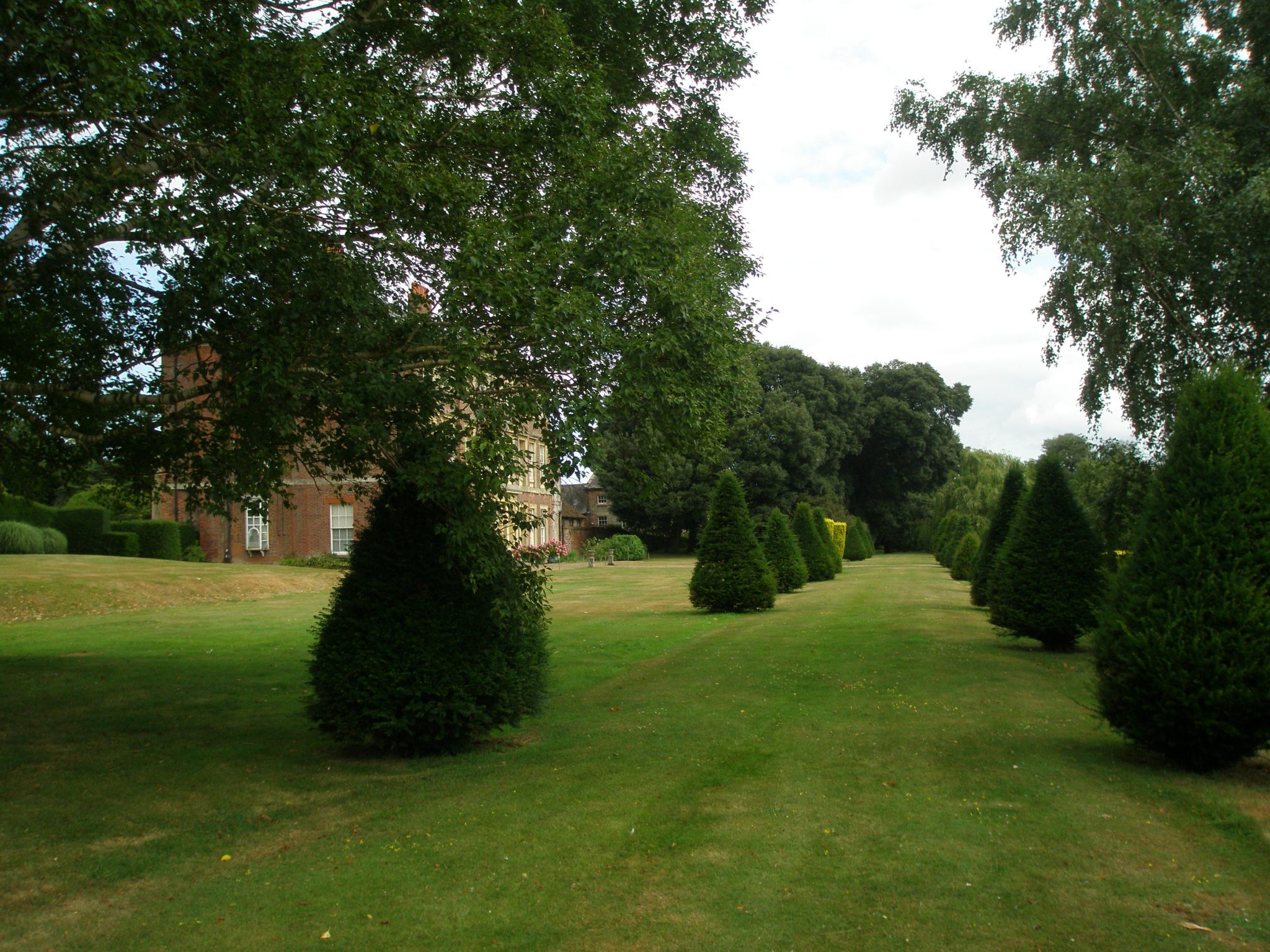


















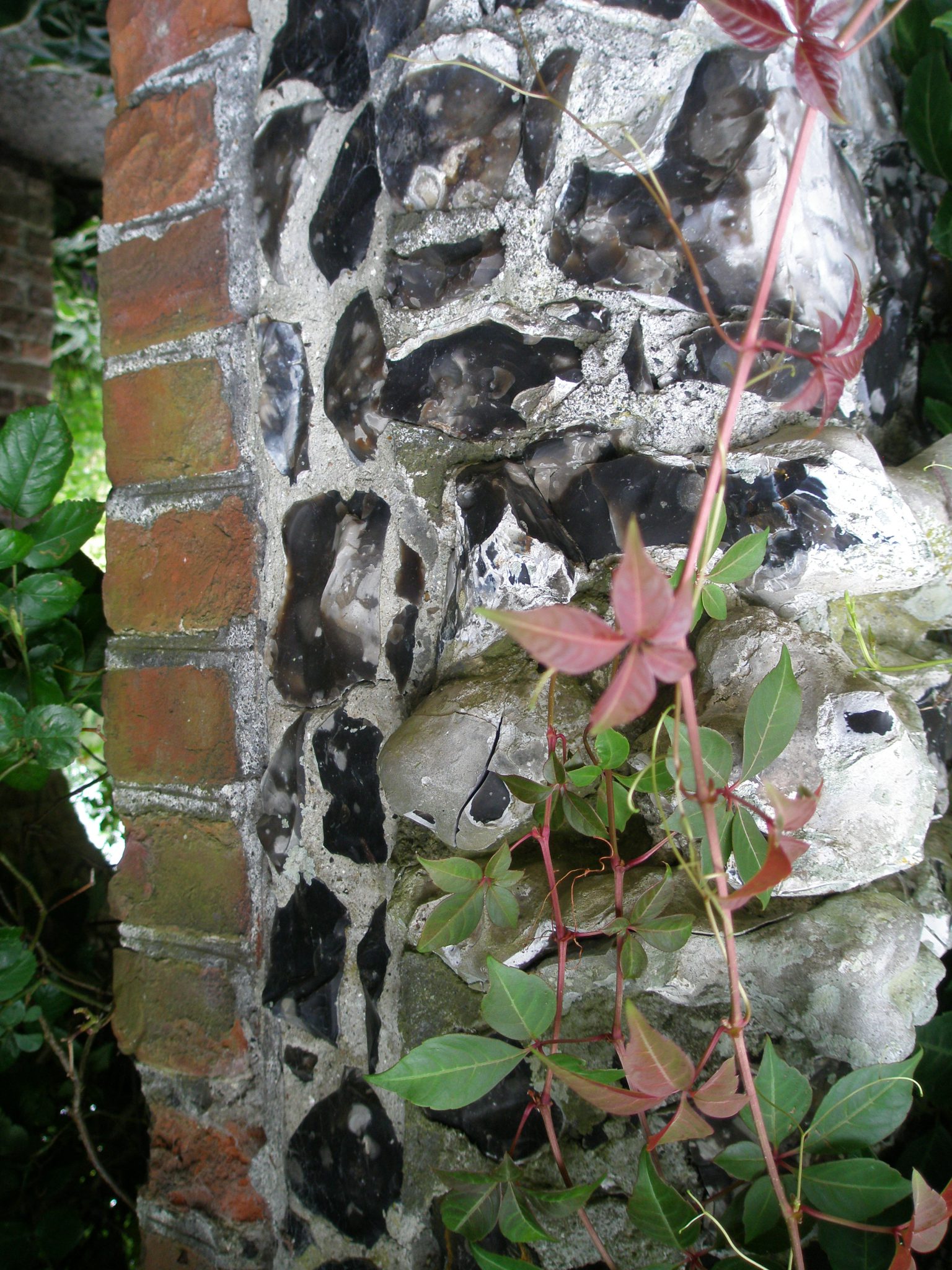
















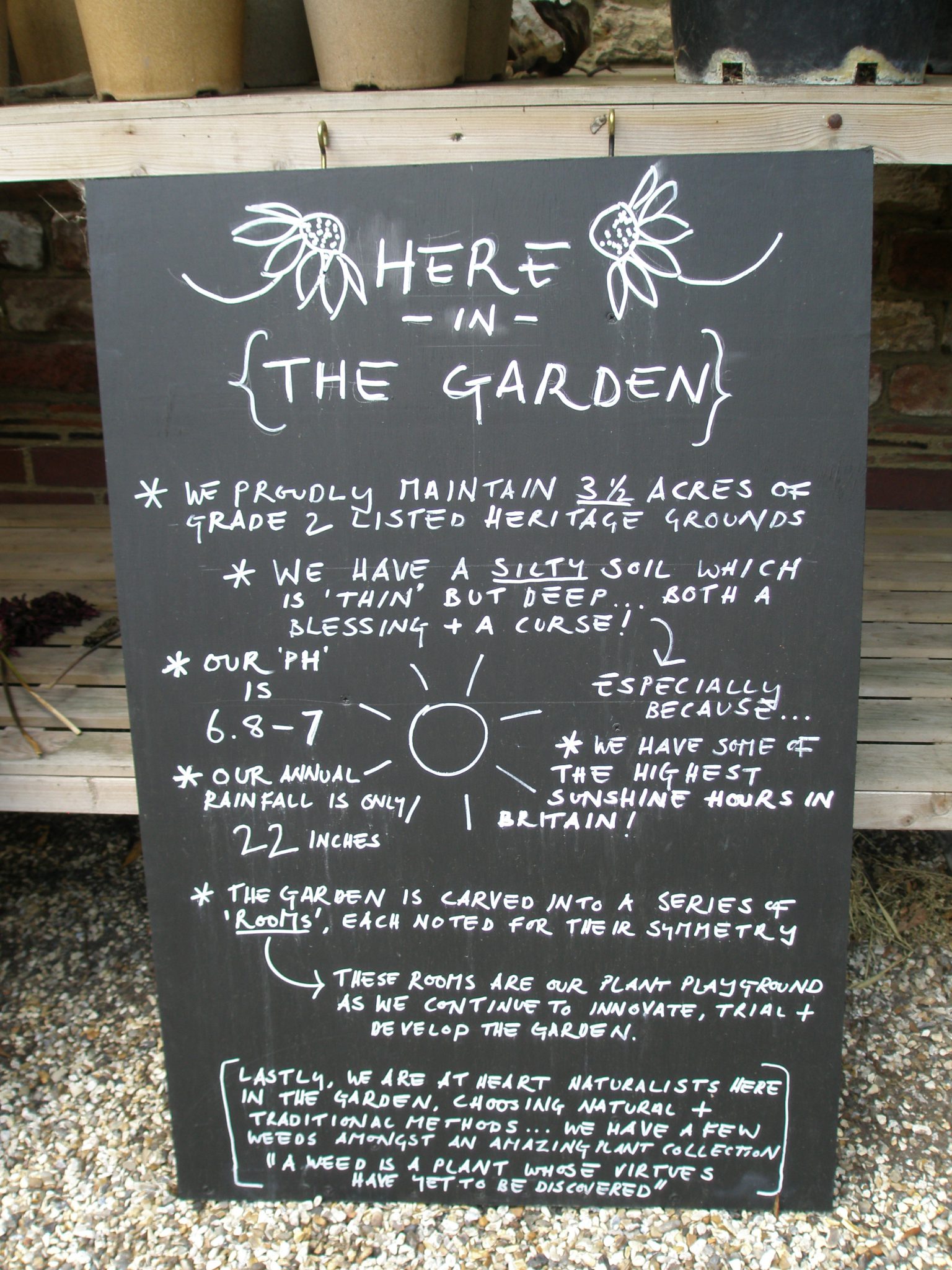

















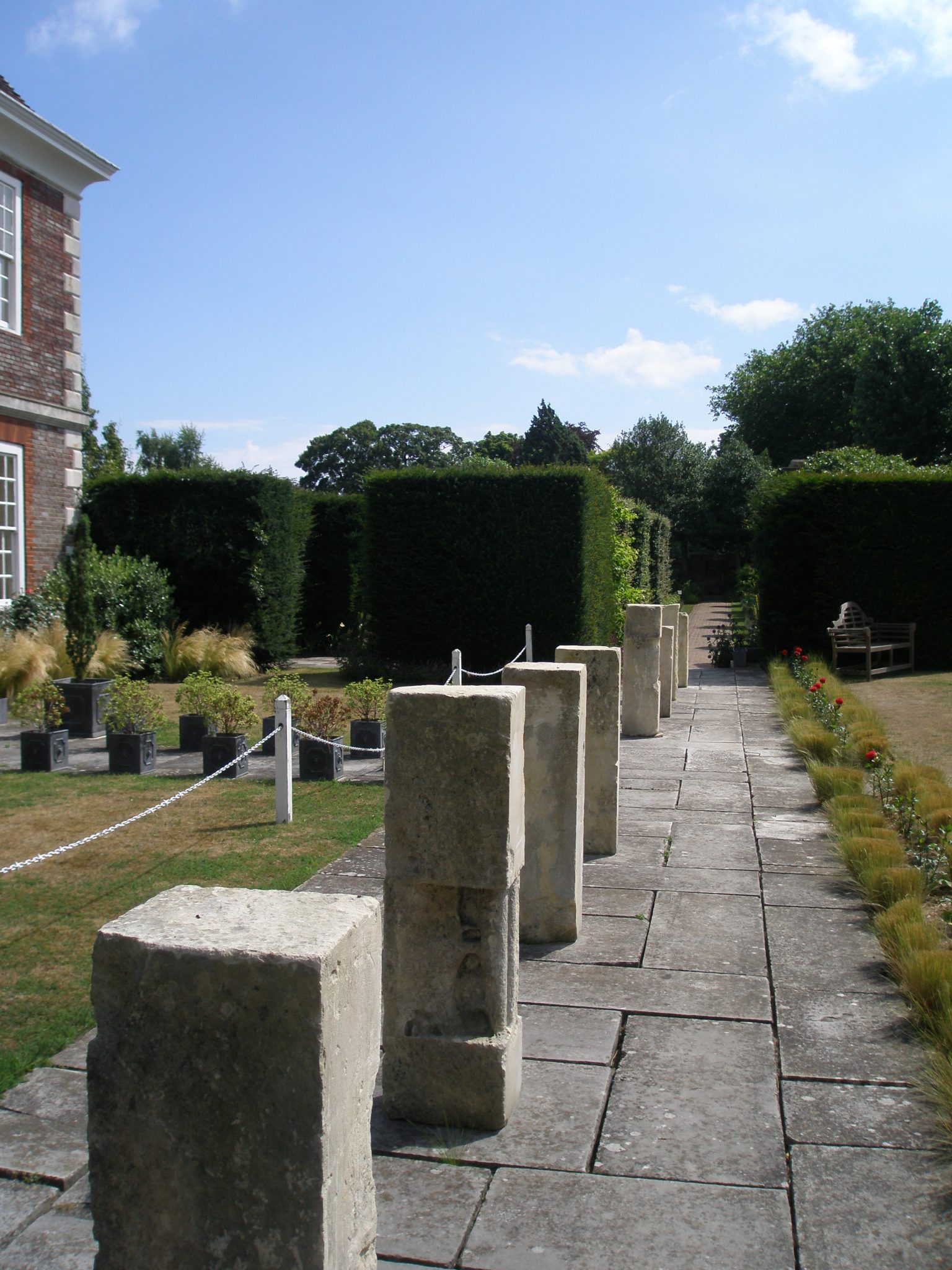

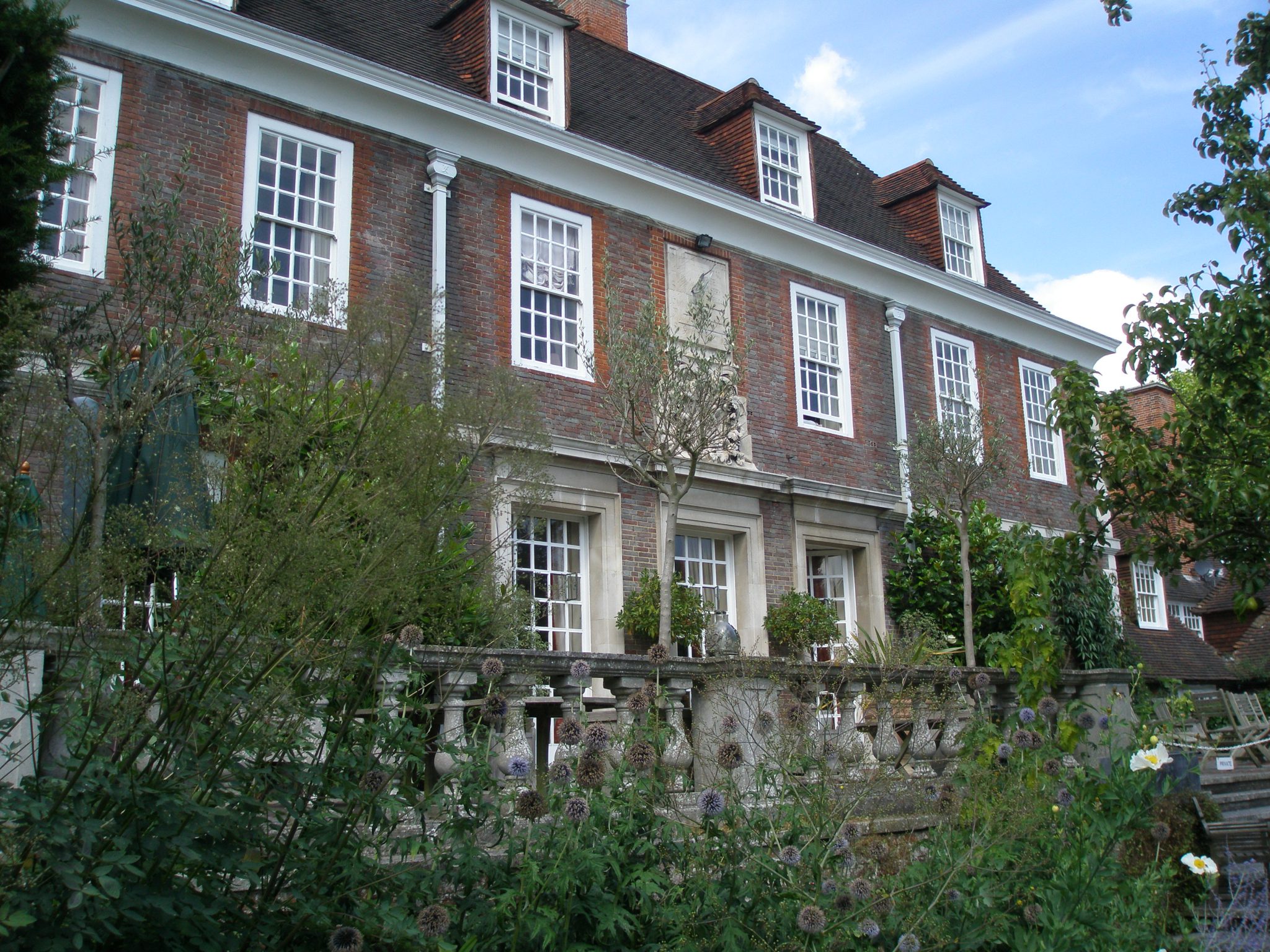














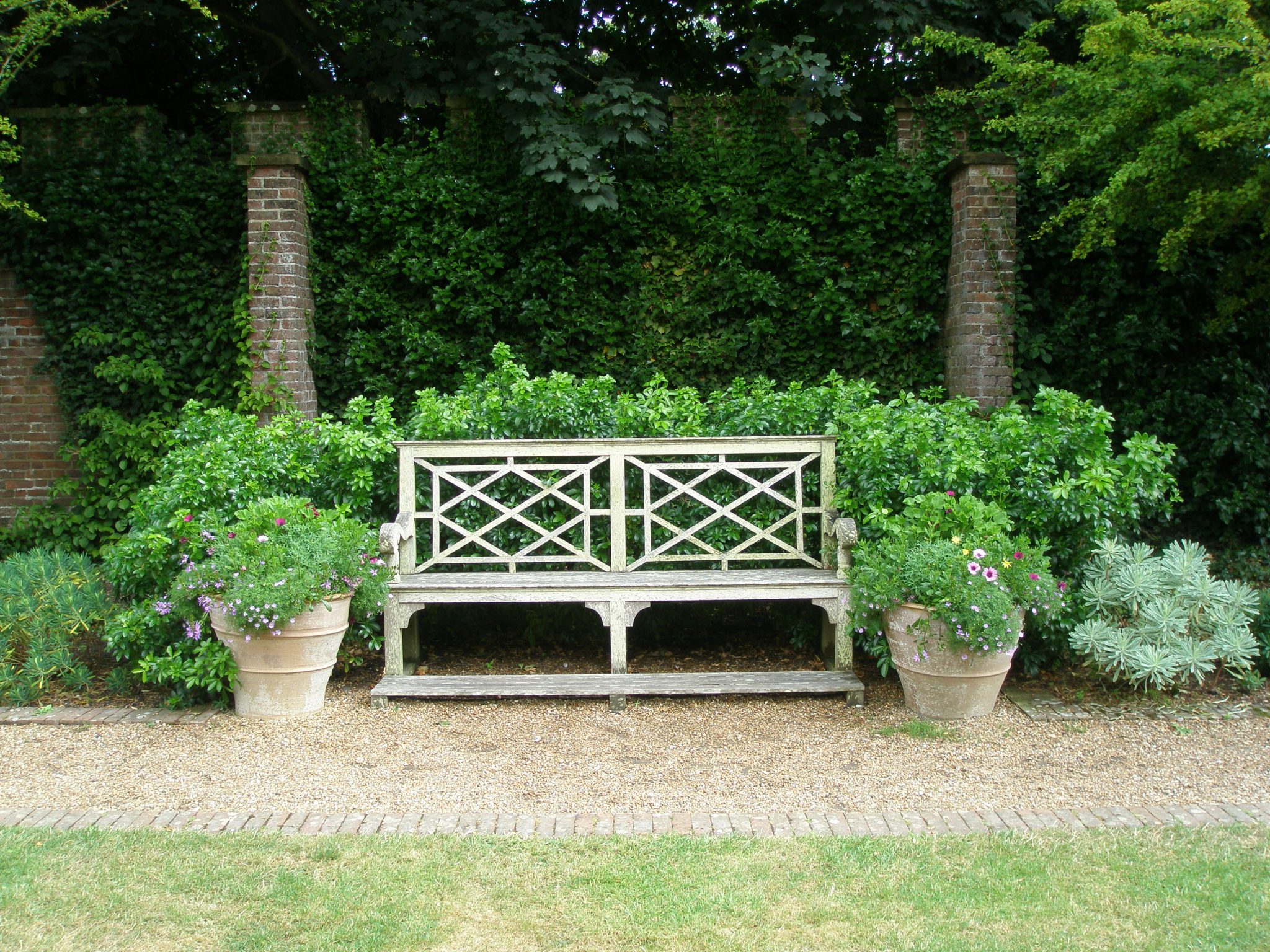
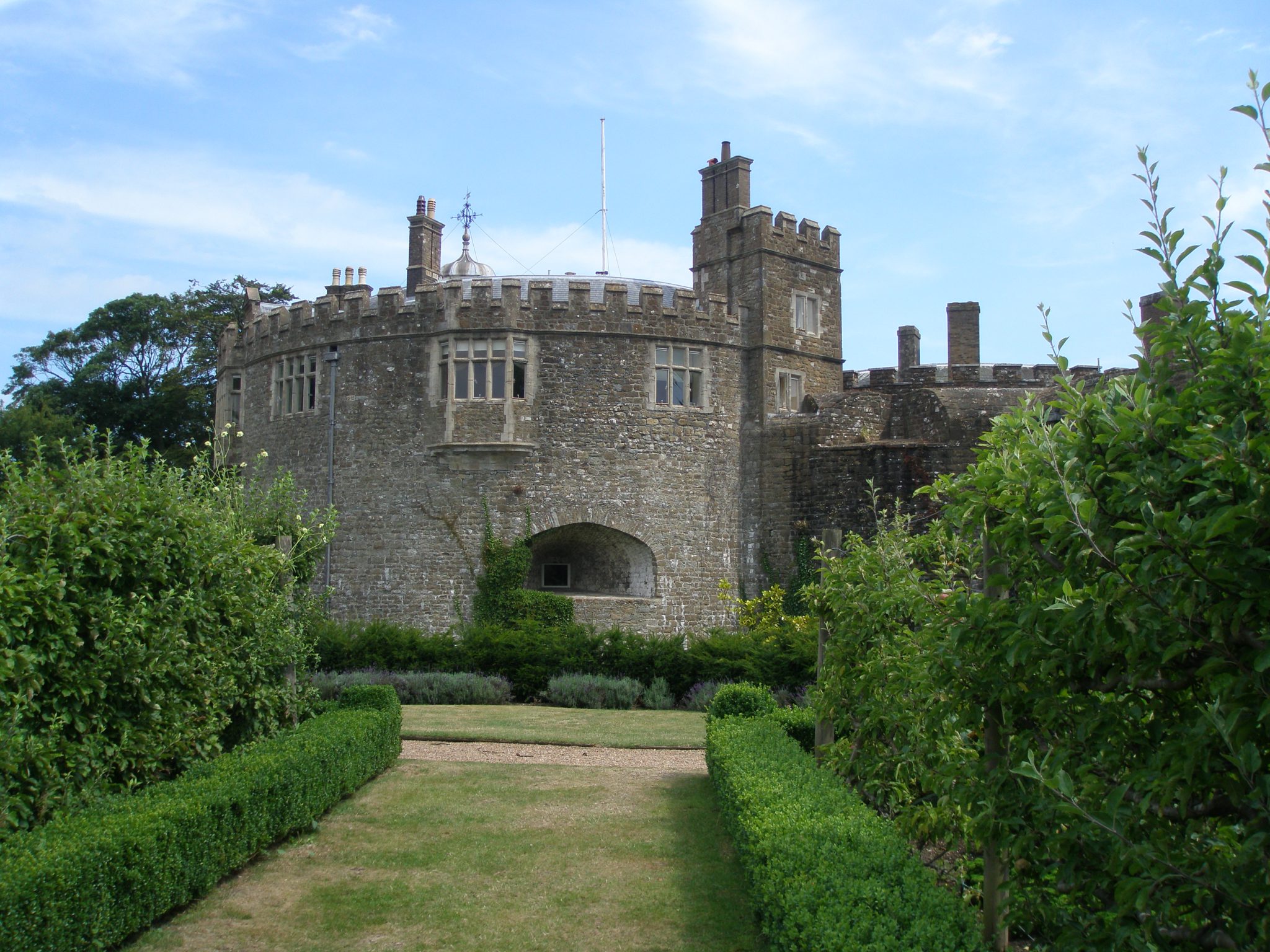






















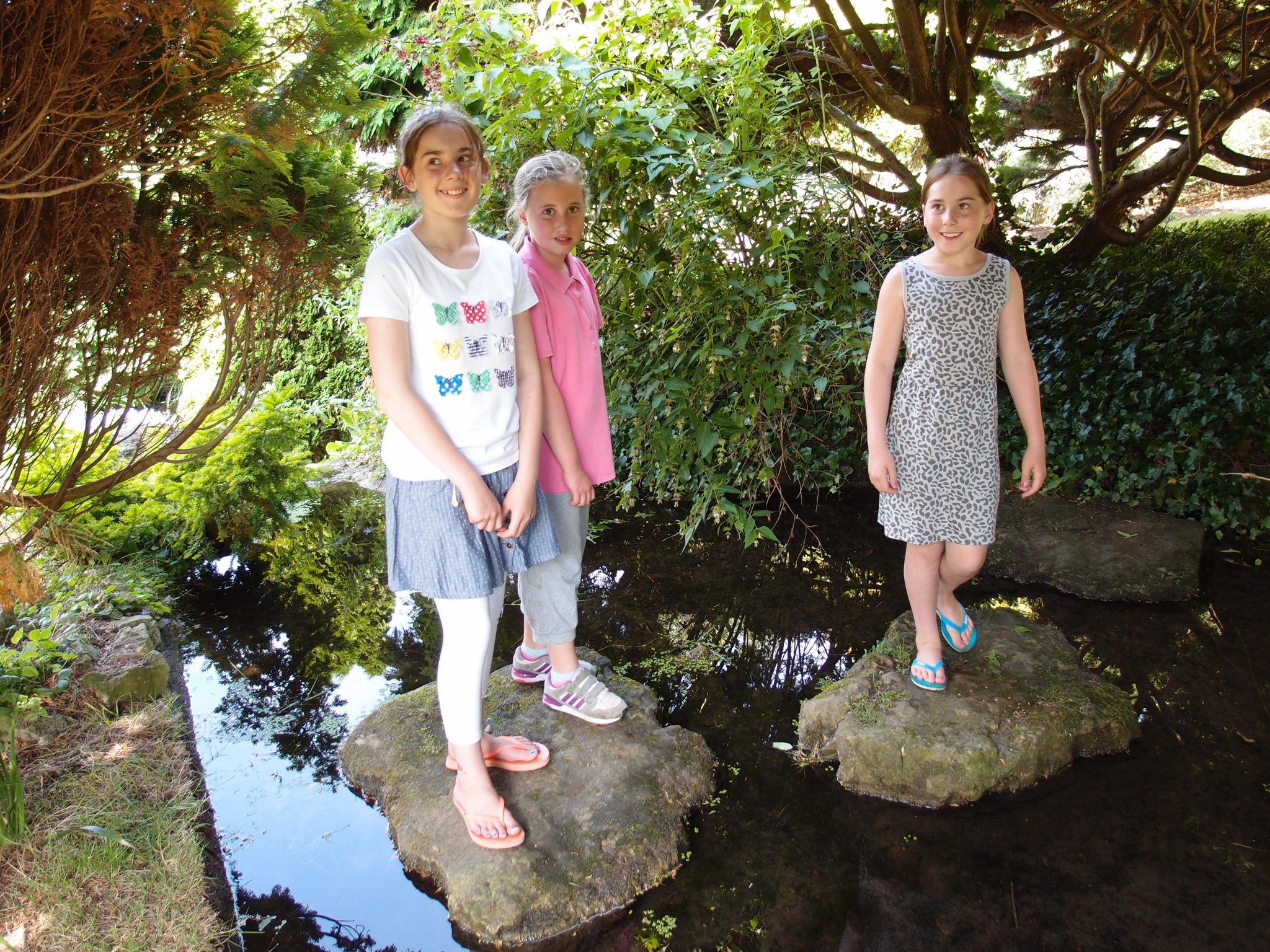


















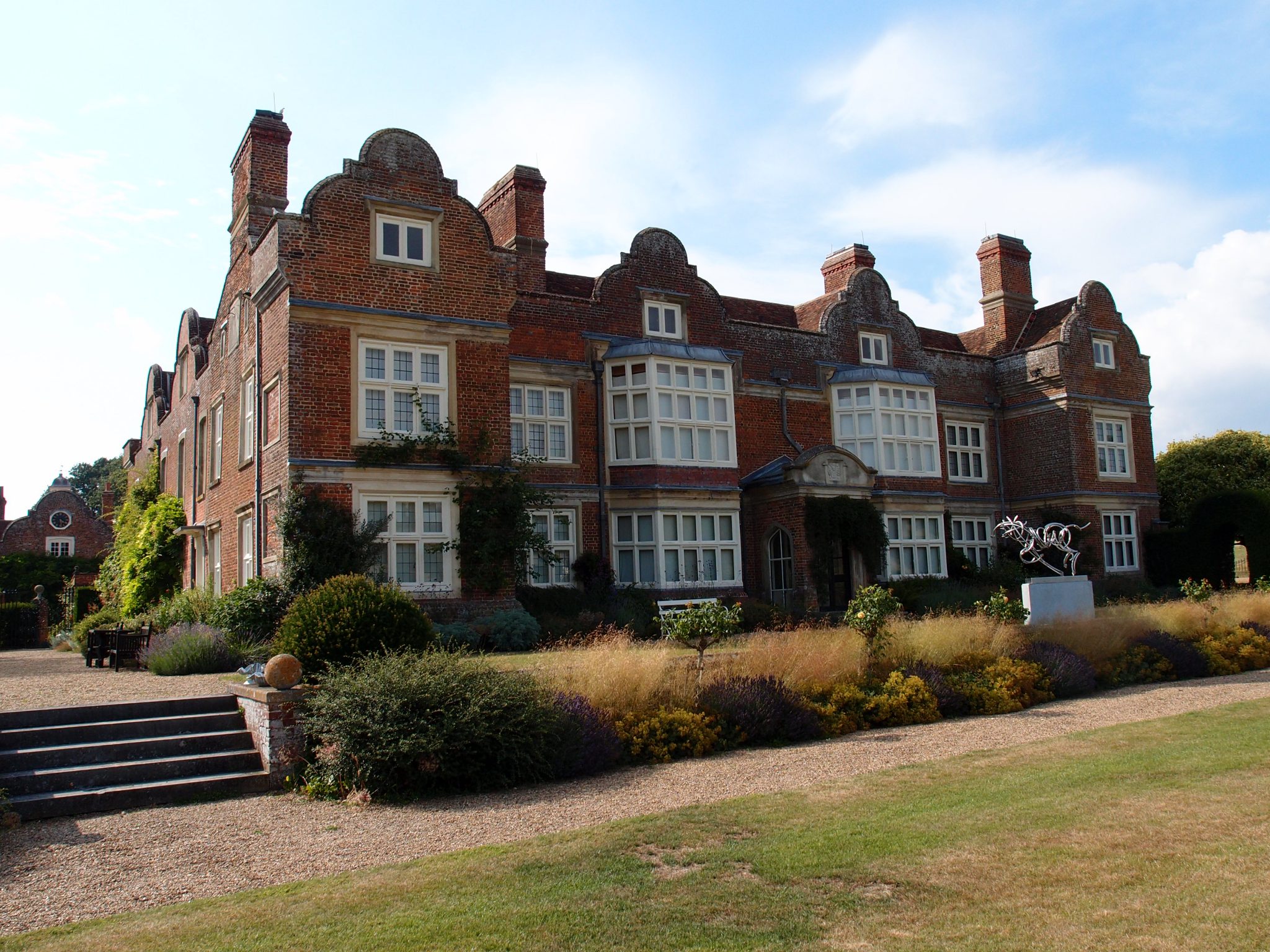















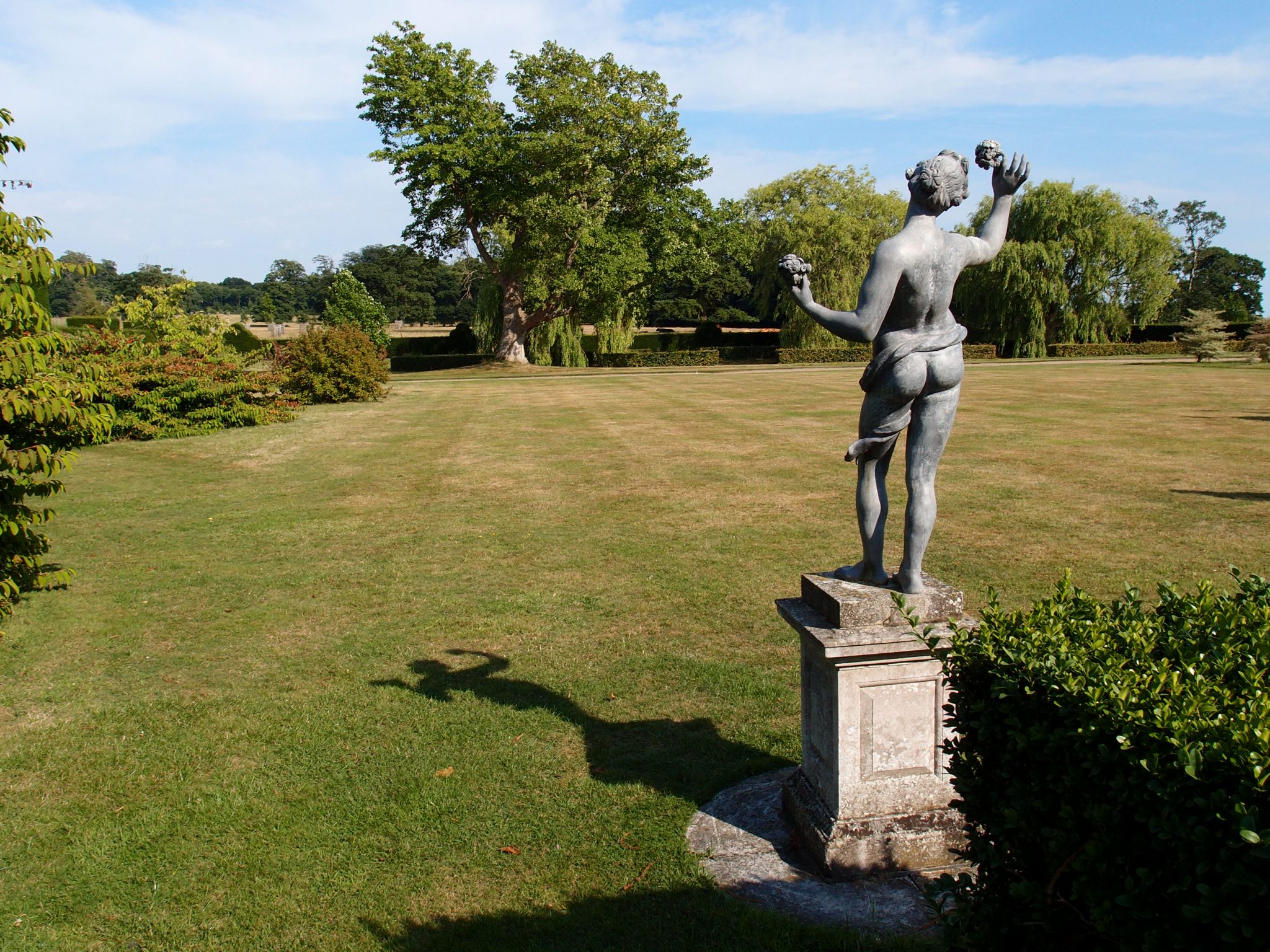



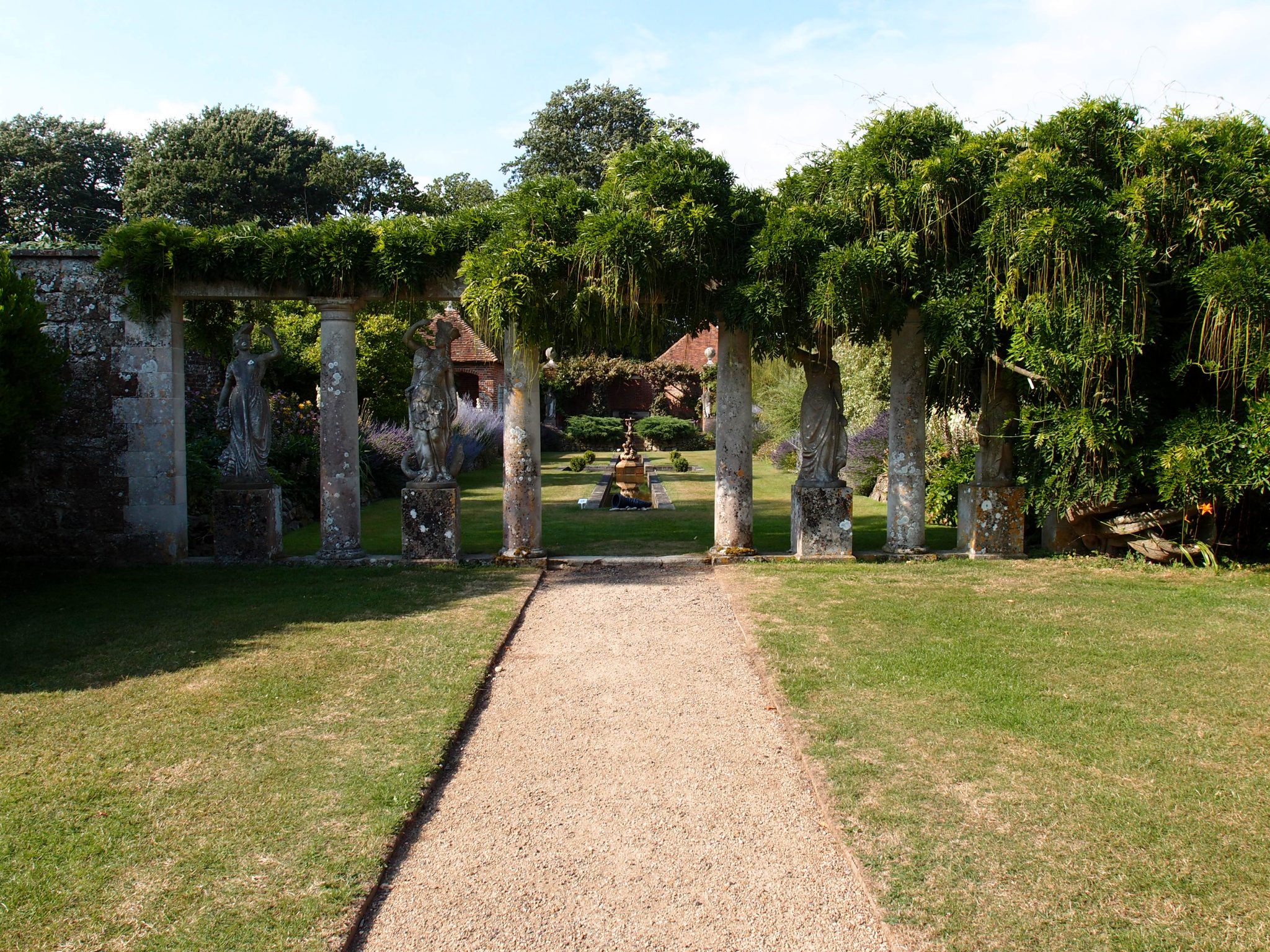


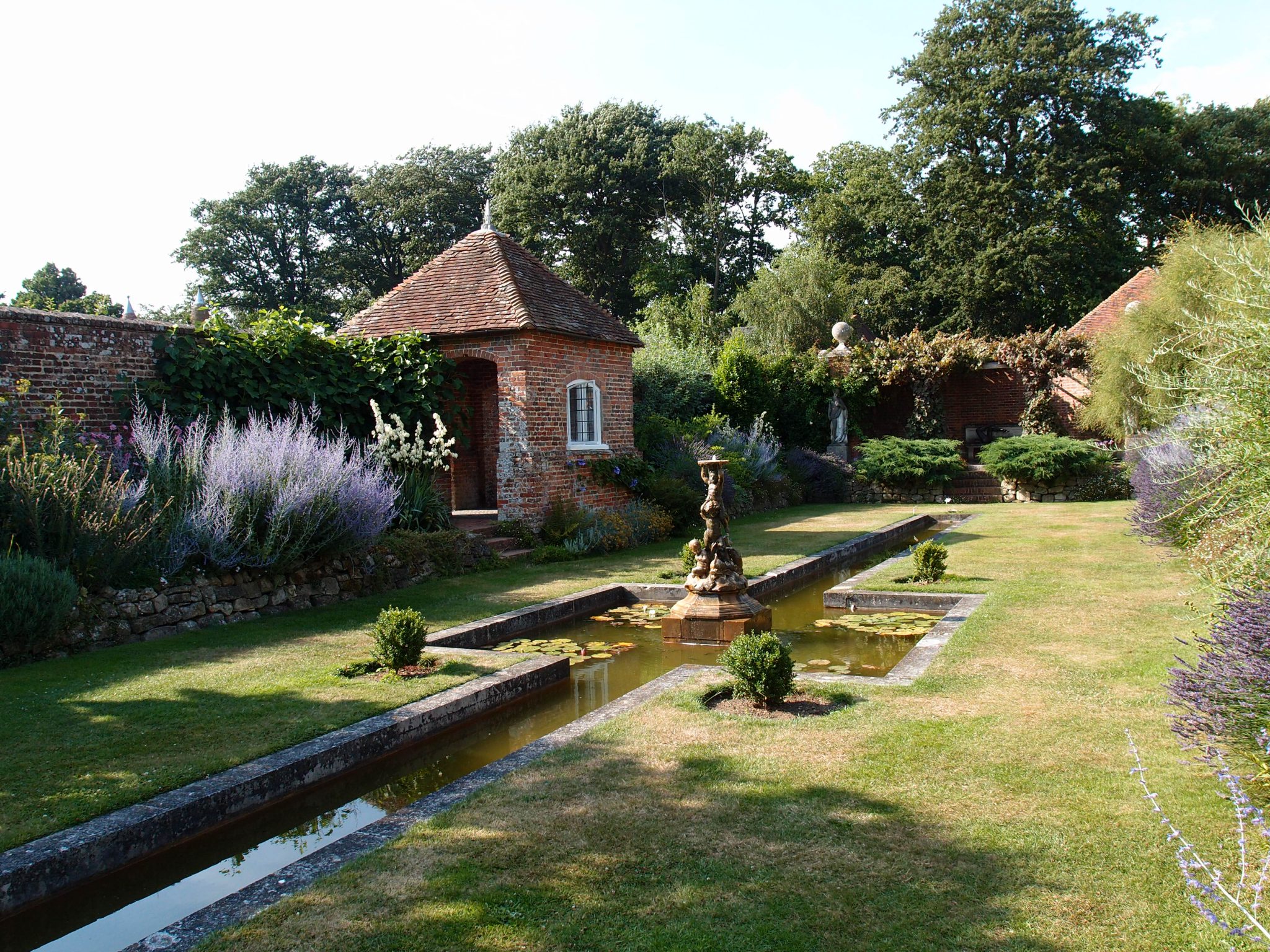





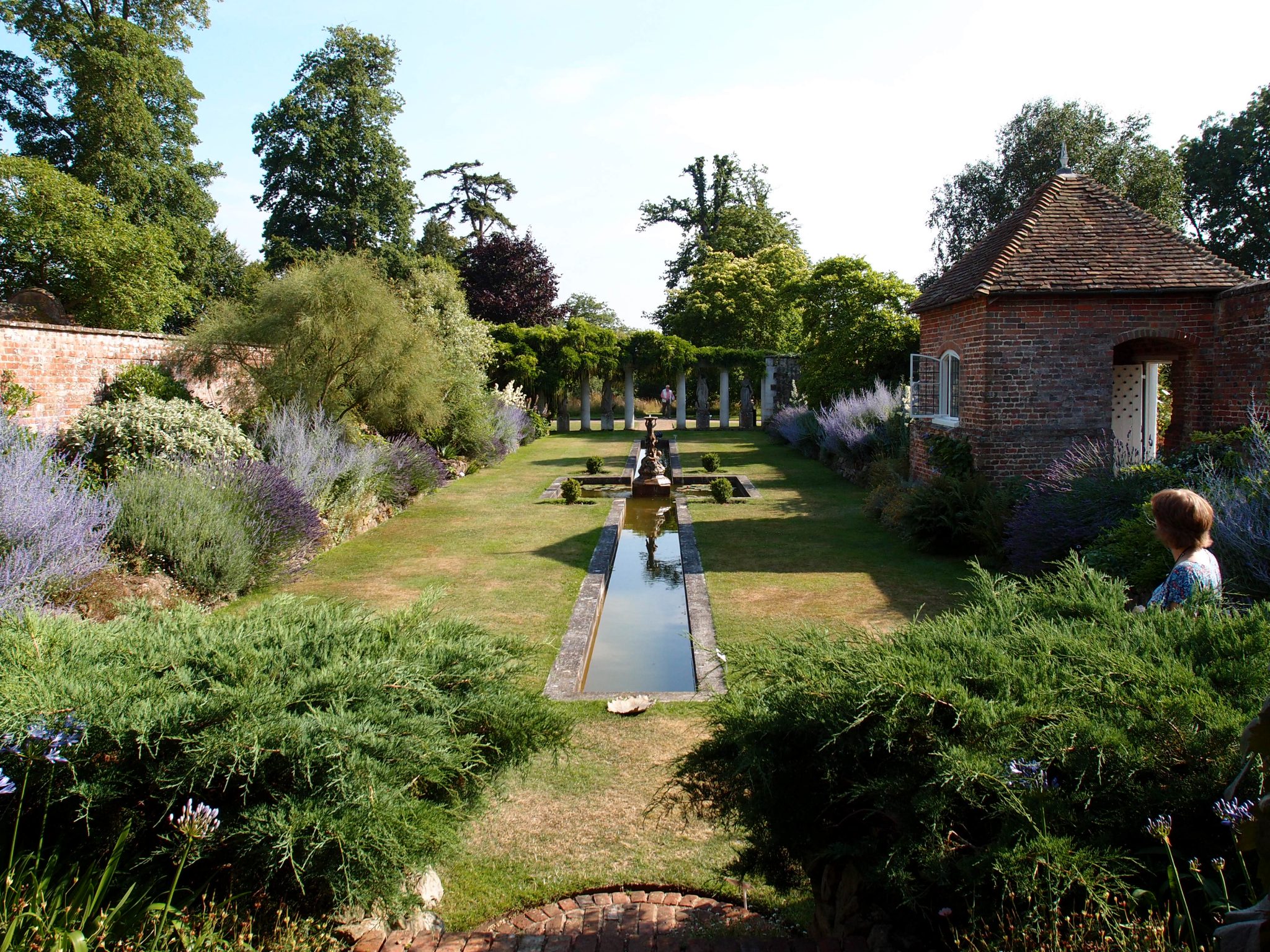












3 Responses to Part Five. Rambling Through the Gardens & Estates of Kent, England.